by GardenLover | Nov 10, 2016 | Gardens to Drive
By Michael Leach
Traffic-stopping maples and forests aflame in gold, red, yellow and maroon foliage grab most of the attention in autumn. They should. Yet nature also offers visual delight that must be carefully sought out when scanning the fall scene. The rewards of such a leisurely pursuit are the grace notes of this splendid season. These small treasures range from dogwoods to tomatoes.
Dogwood trees are among those that make spectacles of themselves with dark red fall leaves. Their berrylike fruit adds a bit of sparkle — and a popular bird food.
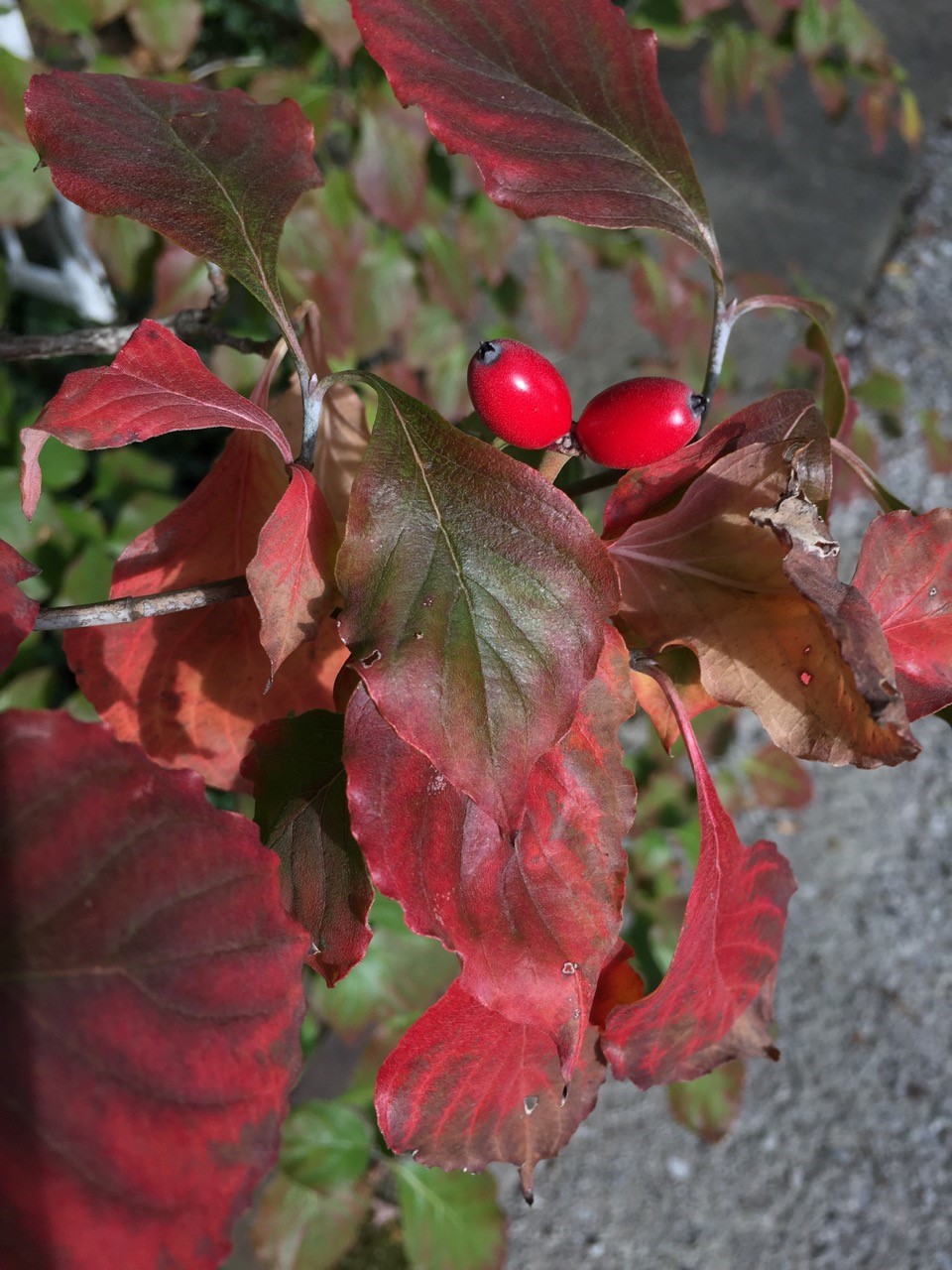
Avian visitors, however, ignore the almost gaudy fruit of Callicarpa or beauty berry. These remain until early winter in my garden.
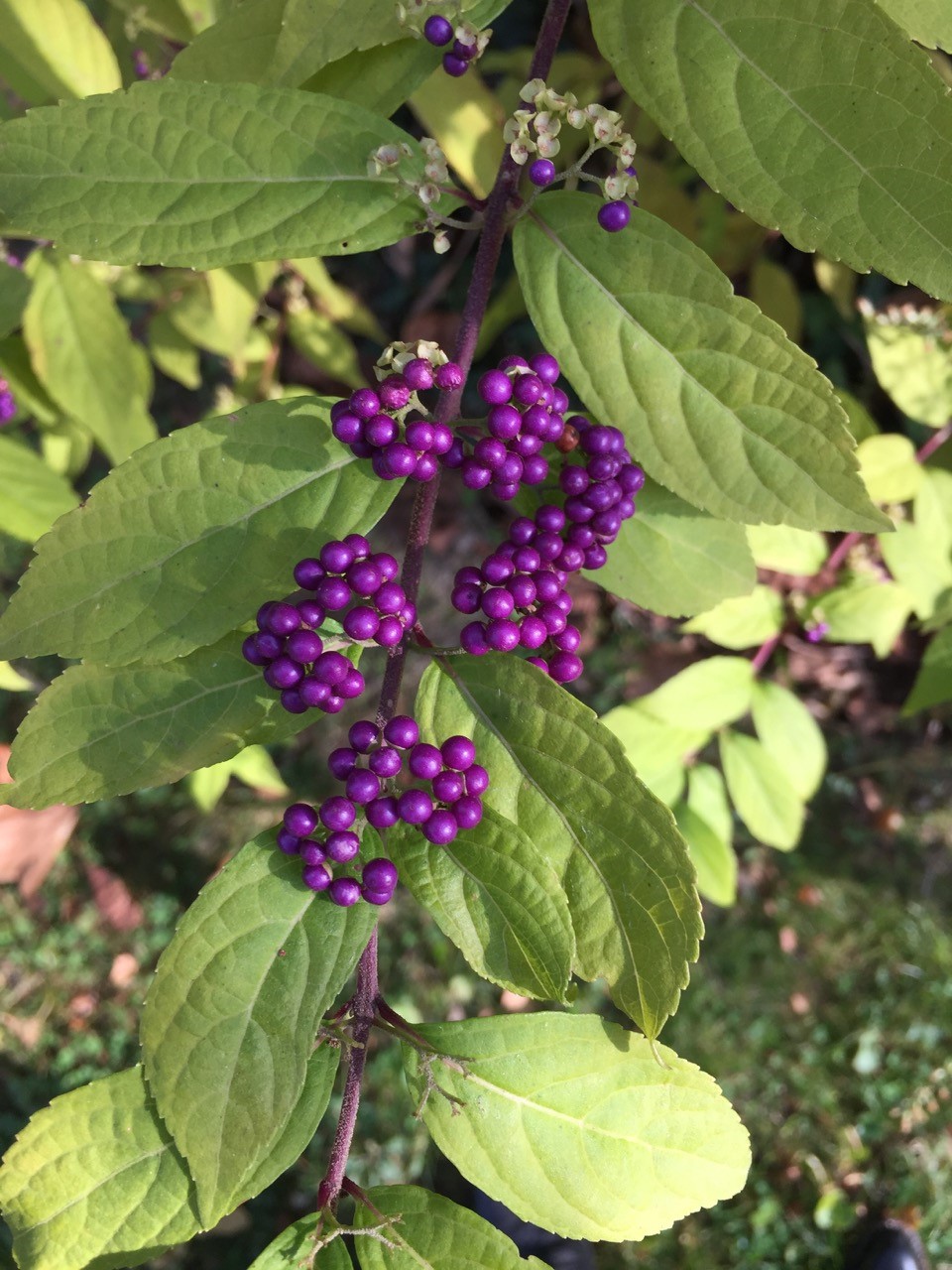
Autumn crocus flowers last only a few days but their overnight appearance surprises and delights. Plus they serve as a hope-filled reminder their spring-flowering cousins are only a few months away.
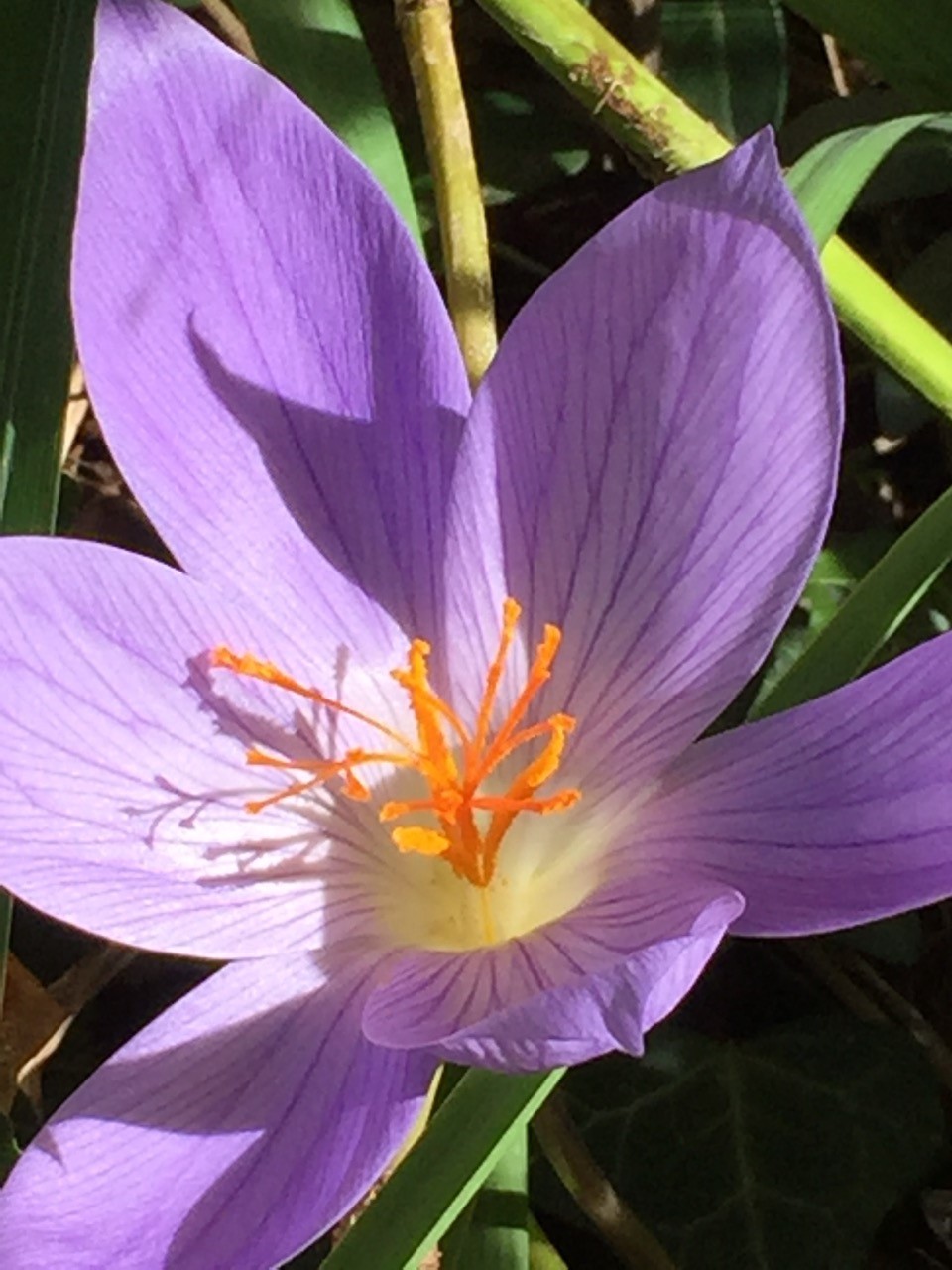
Raindrops on fallen and fading leaves show nature’s magnificent artistry can be found on the forest floor as well as in the branches overhead. 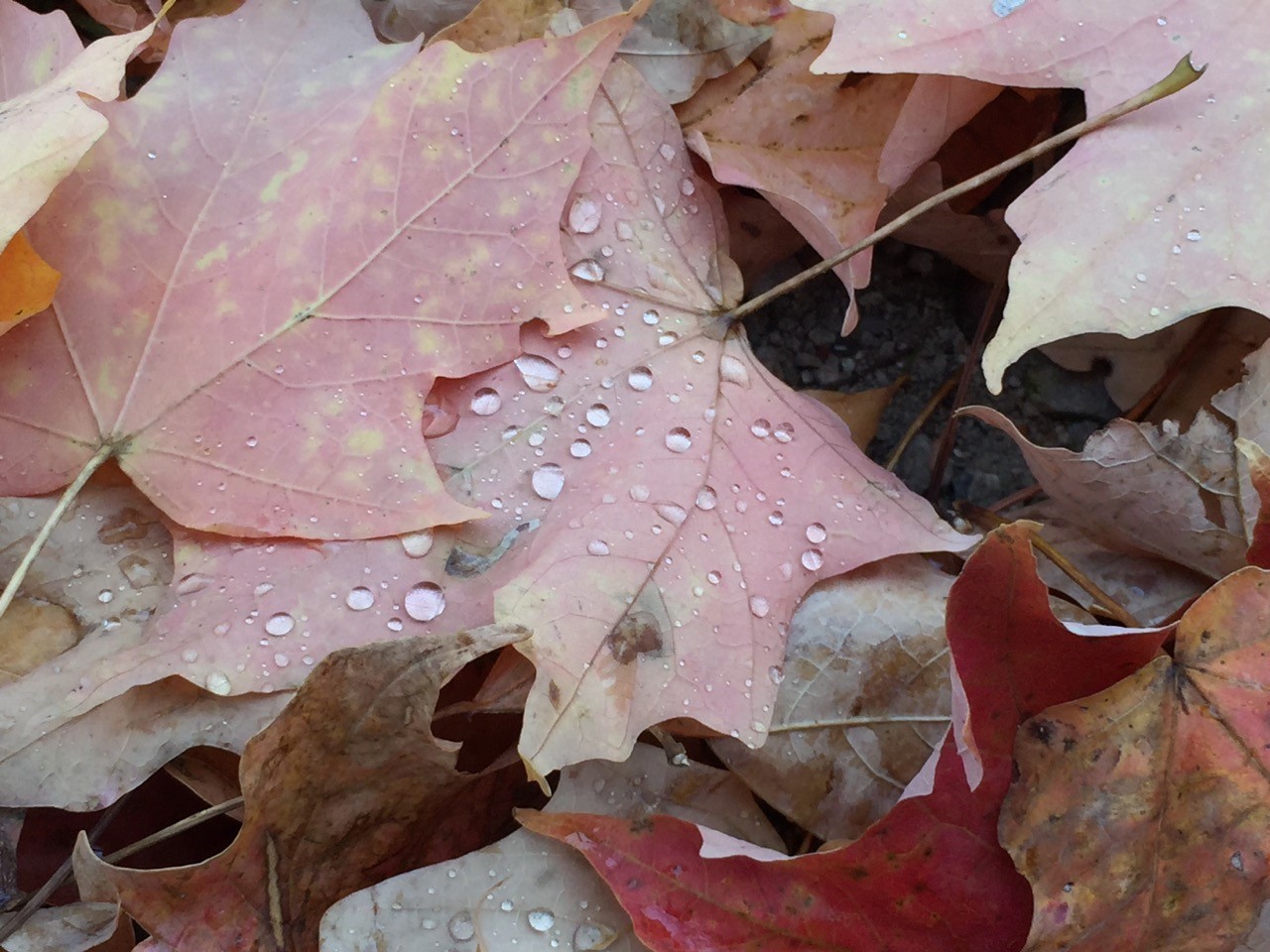
While the flavor of tomatoes fades at bit with cool weather, their jaunty, party look lasts until frost.
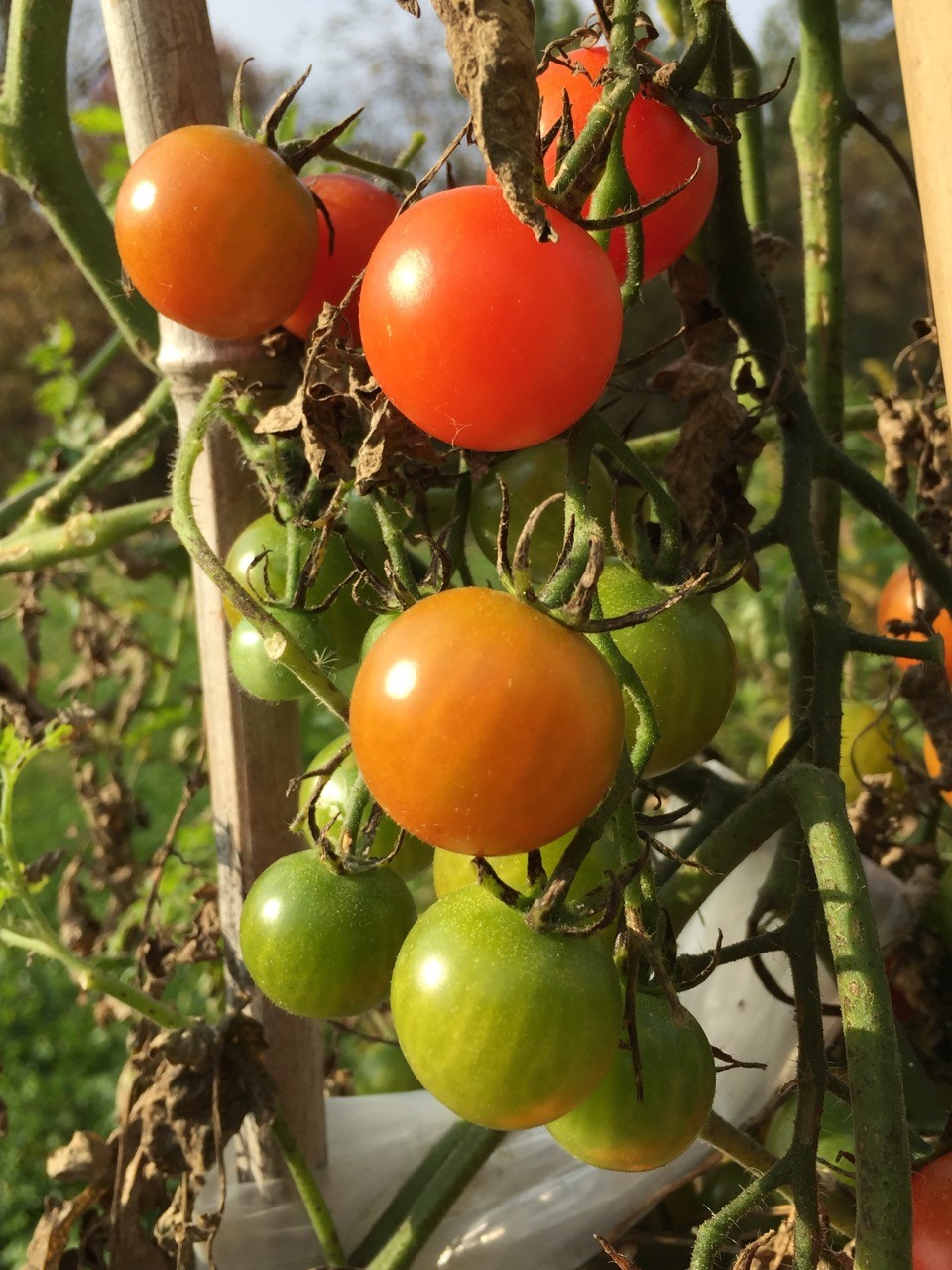
The woody stem and smooth skin of a pumpkin makes an appealing combination that lasts far longer than a mere jack-o-lantern.
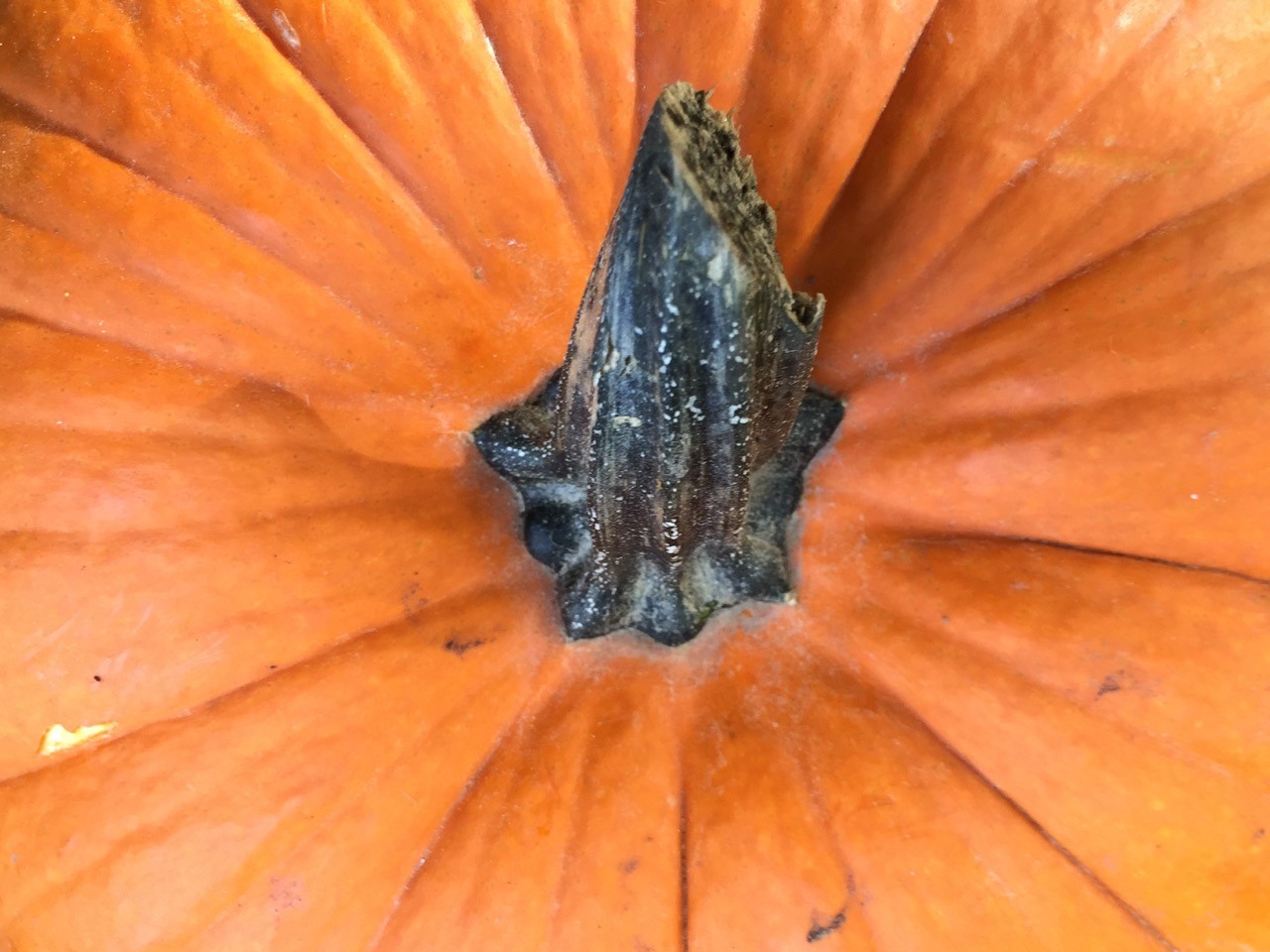
by GardenLover | Oct 18, 2016 | Garden profile, Special Topic
How can I bid farewell to a jealous lover?
By Michael Leach
There was no plan to create a lovely but demanding mistress some 30 years ago. Back then, the goal was to grow a beautiful view framed by the sunporch windows, create a sense of privacy in the backyard and reduce mowing time on the narrow acre-plus lot. No matter what the end result might look like, anything would beat gazing at the neglected border along the garage, the overgrown round flower bed in the center of the back lawn, the aesthetically challenged auto body shop next door, and the rear ends of the modest tract houses along the back lot. Attention would be given only when necessary to the family home place that had stood for about a century when I returned to help my ailing father.
First on the agenda, revive the perennial border, eliminate the round bed and cut mowing time. About half the vast lawn was dotted with shrubs and trees planted higgledy-piggledy. It took over an hour just to trim around them with a push mower. Then came the three-plus-hour ride atop the lawn tractor to cut the rest.
The dots eventually were connected to make an eye-pleasing whole in wide beds covered with English ivy and vinca (highly recommended at that time). Transplanting existing small trees and shrubs, planting new woodies and perennials, faithful mowing and regular edgings, building a low wall of salvaged stones, and endless weeding gradually transformed not only the appearance of the sunporch view windows but also my goals.
After only a few years of intense labor my vision of those borders and beds brimming with perennial color was amended to adding splashes of spot color and bursts of seasonal extravagance, such as the hundreds (maybe a couple thousand) daffodils glowing in the spring sunshine. Abandoned was an ambitious scheme for a fanciful gazebo sitting beside a large pond on the former horse pasture known as the back 40. This idea remains only a successful landscape design class project.
Though my jealous mistress held first place in my heart, loyalties were divided between a journalism career, travel whenever and wherever possible, and necessary — but dull — house work and renovation. This sapped enthusiasm and energy. The garden, meanwhile, evolved into a high-maintenance landscape.
This evolution went unnoticed until three or four years ago when a gardening friend asked what new projects I planned for the season. None. All I hoped to do was keep up appearances. Gone were the occasional and pleasurable hours of dabbling in the dirt and playing with plants, some of the simple joys afforded by gardening. Instead, I faced weekly hours of repeat and seasonal chores: weeding, edging, pruning, raking, watering, leaf management, bed cleanup, over and over and over. I rarely took time to smell the roses or anything else as I raced from one chore to the next. Even with hiring a couple of guys to mow, there never seemed enough energy or time to properly manage the half-acre or so of borders and beds or groom the small vegetable garden.
How did this happen? I totally ignored the key factor in the equation. Over time bodies decline, plants keep growing bigger. It doesn’t matter how much effort I give, the flora retains the upper and increasingly heavy hand.
Three decades ago it was easy to do 6 to 8 hours of work on Saturdays and other off days and be ready to do almost that much again the next day. The readiness and desire for dirt therapy remain but not the stamina.
So the time is approaching, perhaps next year, perhaps five from now, to scale back. Reality, or is it the wisdom gained with age, seems to be winning over the idealist, the dreamer, the one who never imagined he would think wistfully back to age 50— or be stunned at facing 68 in a few weeks.
Routine maintenance, whether indoors or out, erodes my enthusiasm as I trudge along in vain hopes of checking off items on an endless to-do list. I assure myself there’s more to life than weeding, watering and stooping (or dusting and vacuuming for that matter.) A condo with a balcony or tiny house with postage stamp yard are current dreams. It’s time to scale back, I assure myself.
Such assurance fades as I stroll along the brick garden path that I laid down after building a small brick-paved patio adjacent to the sunporch perhaps 25 years ago. I cross a swath of lawn to view the little goldfish pool (a family project about 50 years ago), and then wander a few yards more to sit on the bench under the sycamore tree. Was it really 40 years ago I tugged the little sycamore whip from a stream bank in Adams County (Ohio) and brought it home to plant? Little did I know that when the time came for me to hold down the home place, the tree would offer welcome shade on countless breaks from toil and long pauses to simply sit and gaze in wonder at the green and flowery world all around.
After I walk the little brick path the last time, what will become of the flowers that have been in my life for decades? Some of the plants, the peonies for instance, have been part of my life from earliest memories. Grandma Leach and Papaw Stewart passed along peonies from their gardens as soon as we moved here in 1952. These have no names, but their blooms are as familiar and welcome as the faces of friends.
Even when I can no longer pinch back faded flowers and plant seeds, I shall still treasure plants — and the memories of creating (and maintaining) a living landscape painting that grew and bloomed beyond the sunporch windows.
But enough musing, the ivy needs cut back from the sidewalk again and those impatiens are begging for water as usual.
Scaling back — Surely there are readers who’ve scaled back and lived to tell about it. I’m looking for suggestions on how to approach it and no doubt others are, too. So please share suggestions. What worked or is working for you?
by GardenLover | Oct 11, 2016 | Gardens to Drive, Snapshots, Special Topic, Trendspotting
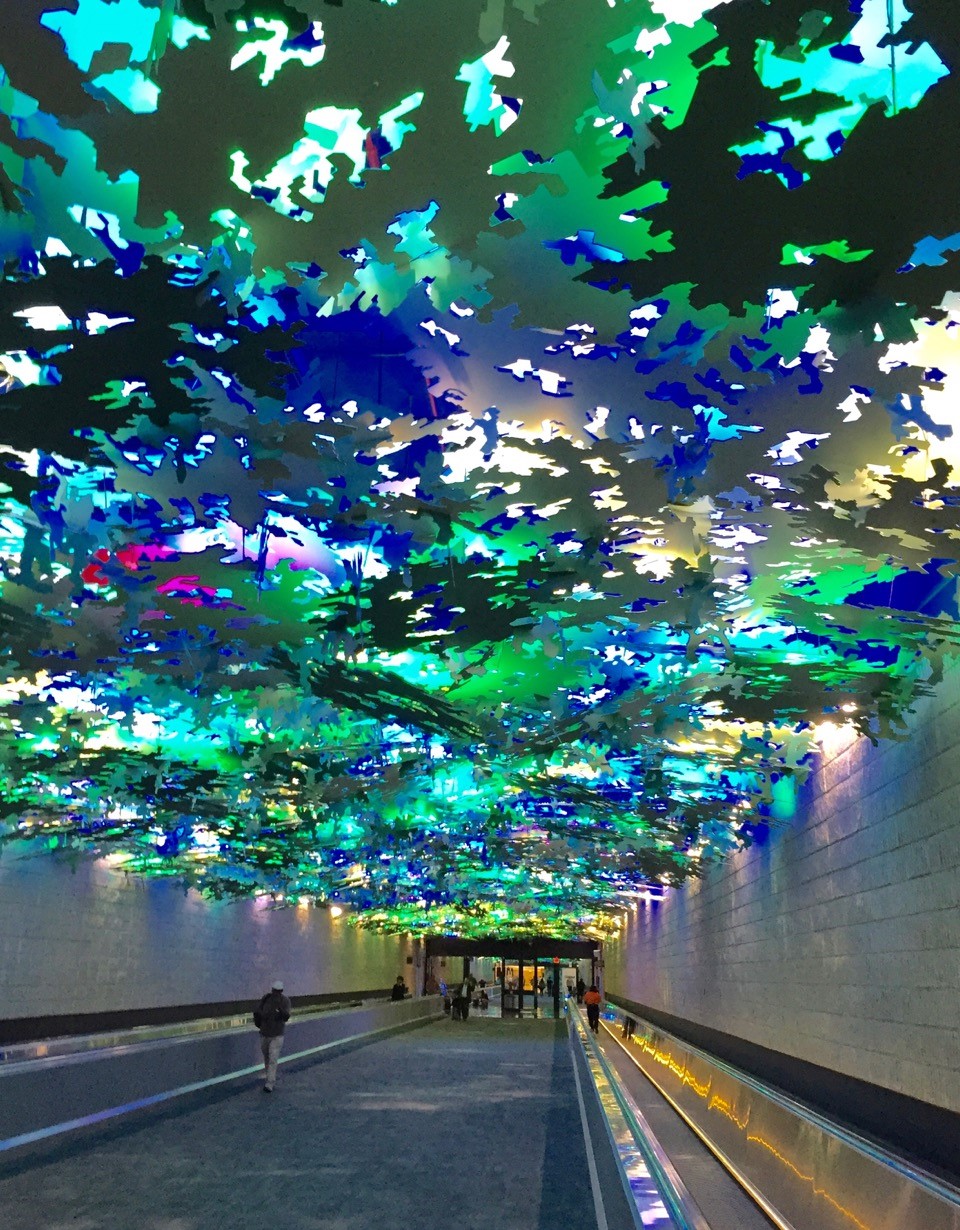 Art brings garden feel to subway tunnel
Art brings garden feel to subway tunnel
By Michael Leach
I didn’t expect to have a garden moment in the subway of the Atlanta airport, but it happened.
Shunning the train to get in some needed walking en route to my gate, I passed several pieces of sculpture by African artists in one of the connecting tunnels between concourses. The greenish color of some of the stones, the serene faces and fluid lines suggested life outdoors and fresh air. I coveted several as focal points in my landscape.
Among my favorites were Galactic Dancer by Tapfuma Gutsa, Woman Showing Traditional Salute by Edronce Rukodzi, and Caring Mother, by Lameck Bonjisi.
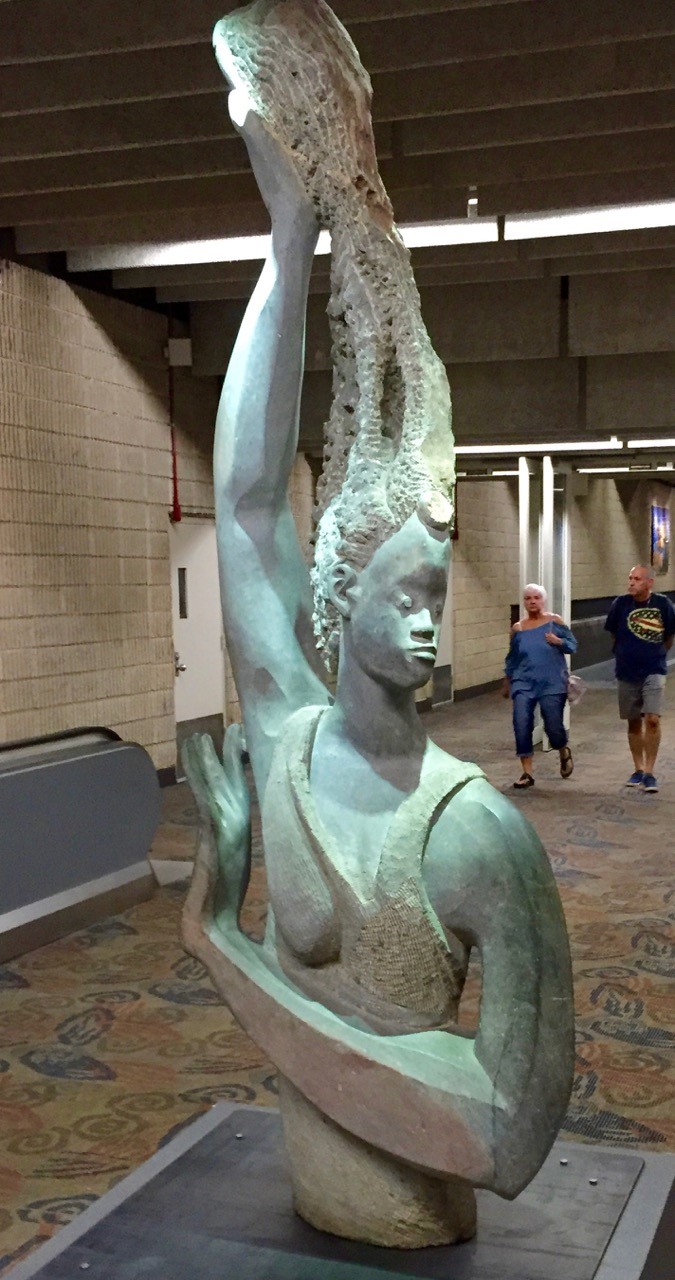
“Galactic Dancer” by Tapfuma Gutsa

“Woman Showing Traditional Salute” by Edronce Rukodzi

“Caring Mother” by Lameck Bonjisi
Adding further outdoor ambience was a colorful installation suggesting a leafy canopy running the entire length of another connecting tunnel. Recorded tweets and trills of bird songs added to the fantastical effect of being deep in a whimsical, shaded garden.
Had I known my flight would be delayed by nearly an hour, I’d have hoofed it through the rest of the tunnels to see what was on exhibit. Or backtracked to look more closely at the photo exhibit and permanent exhibit of Atlanta’s history.
To learn more about art in the Hartsfield-Jackson Atlanta International Airport visit: http://www.atl.com/about-atl/airport-art-program/.
by GardenLover | Sep 29, 2016 | Trendspotting
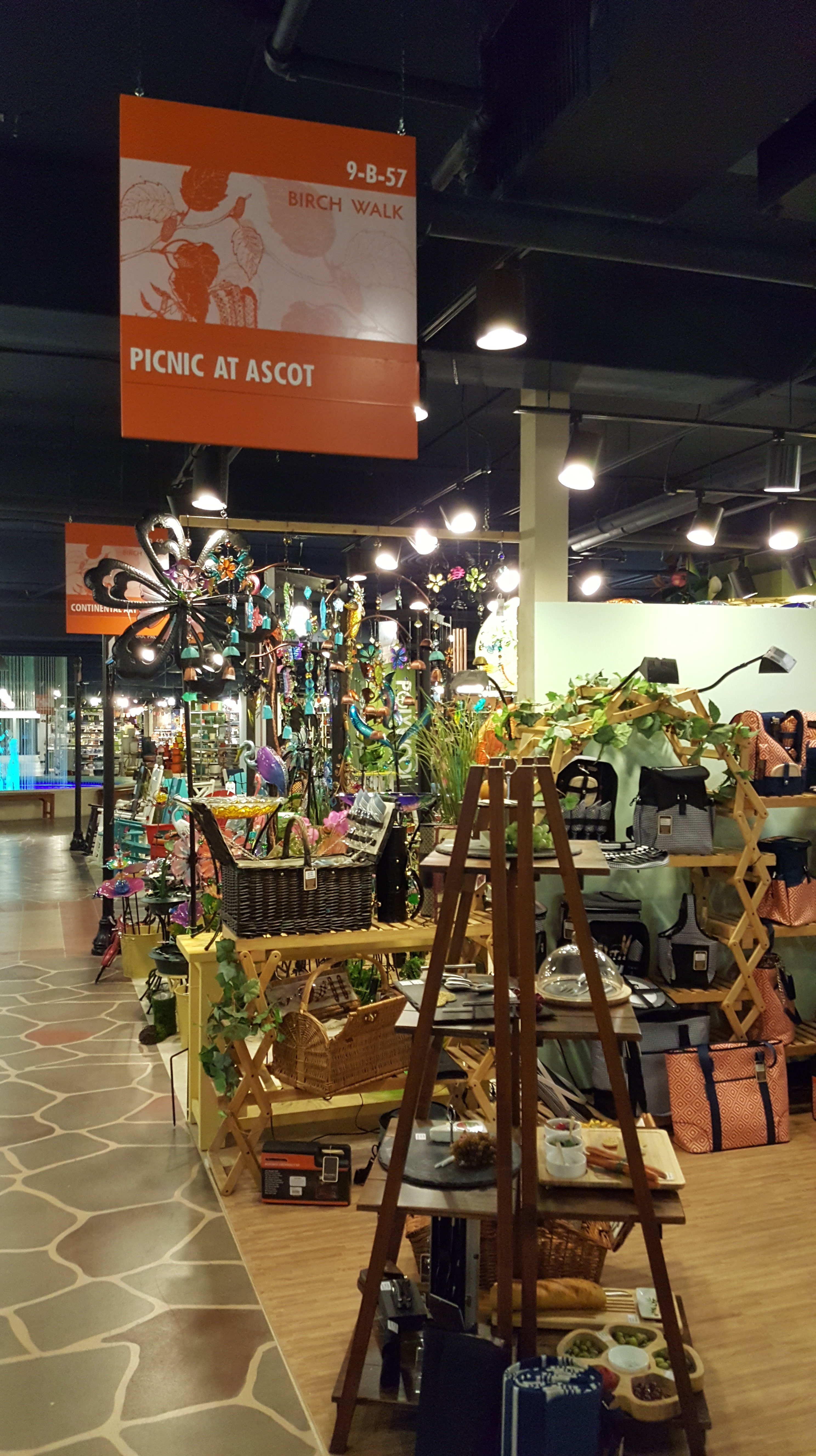 By Teresa Woodard
By Teresa Woodard
Heartland Gardening headed to the International Gift and Home Furnishings Market at AmericasMart Atlanta to uncover trends in outdoor furnishings. Here are a few to inspire your outdoor spaces.
1) Upgraded Recycled Furniture – One furniture manufacturer is transforming landfill waste into attractive, all-weather furniture.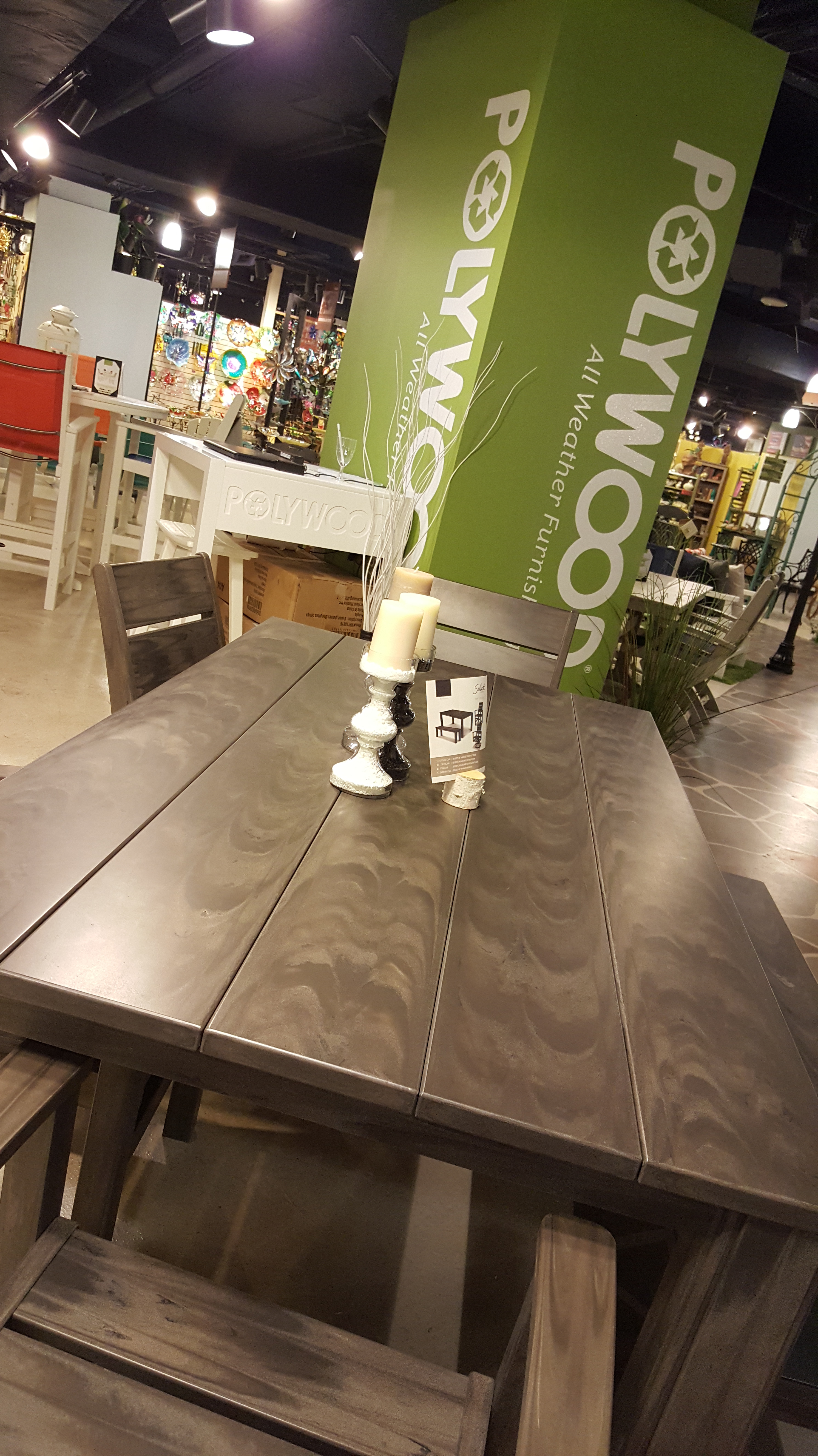
2) Retro Camp Gear – The growing fireplace craze is generating renewed interest in camp tools like pie irons, marshmallow sticks and popcorn poppers.
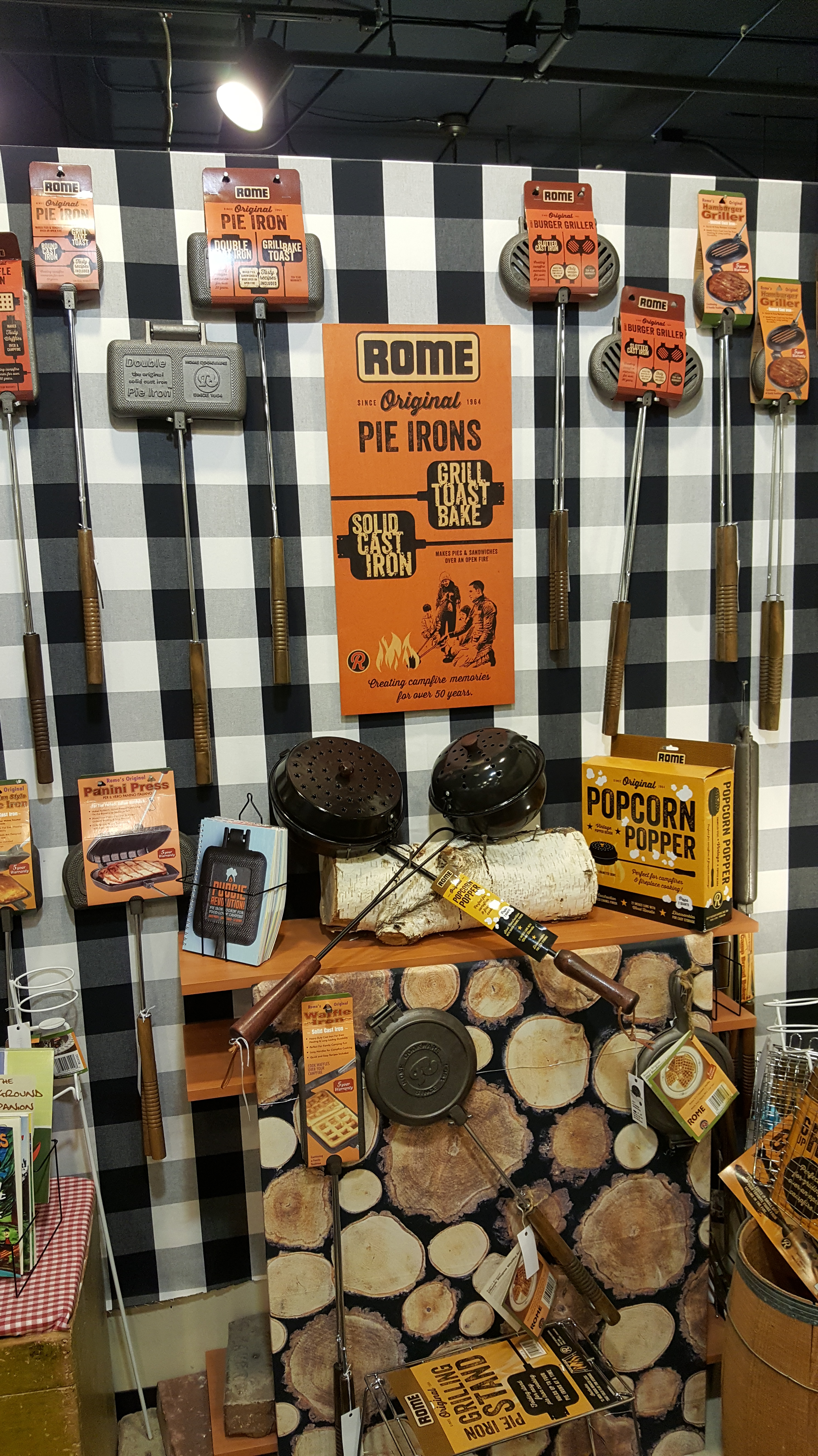
3) Cutting-edge Metal Furnishings – The laser-cut trend of the fashion industry is now entering the outdoor furnishings industry with metal benches cut in intricate patterns.

4) New Heights for Miniatures –The miniature craze remains strong with holiday additions and whimsical nature-inspired abodes.
5) Parisian Bistro-Weave –The classic French bistro chairs of the 19th century cafes are popping up inside kitchens and outside on patios. Available in a variety of colors and patterns, they easily mix with rustic or sophisticated pieces.
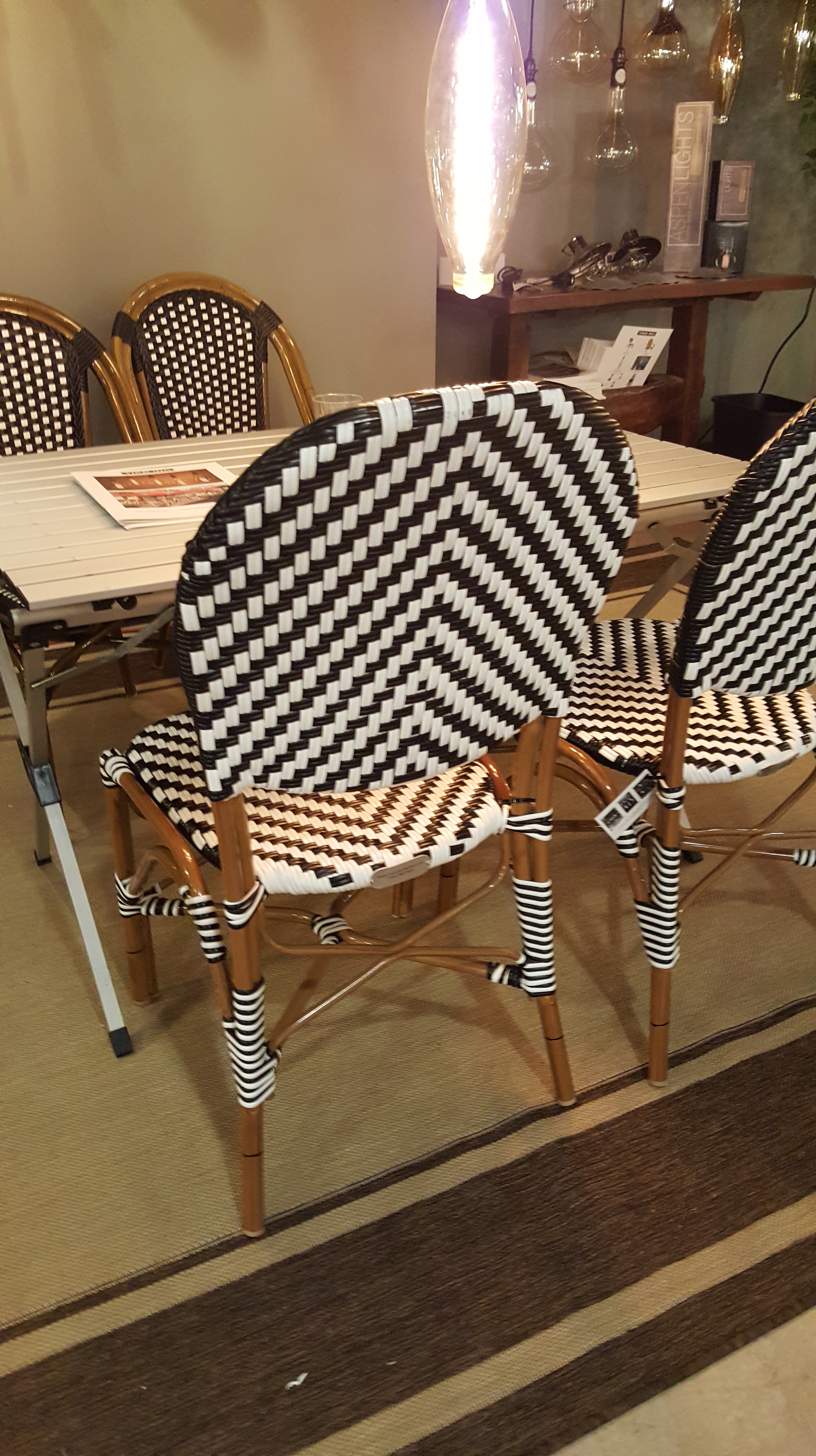
6) Tiki Fun – The Tiki culture, more of 1930s Hollywood than true Polynesia, is enjoying a revival in today’s backyards as homeowners create tropical backyard vacation destinations.
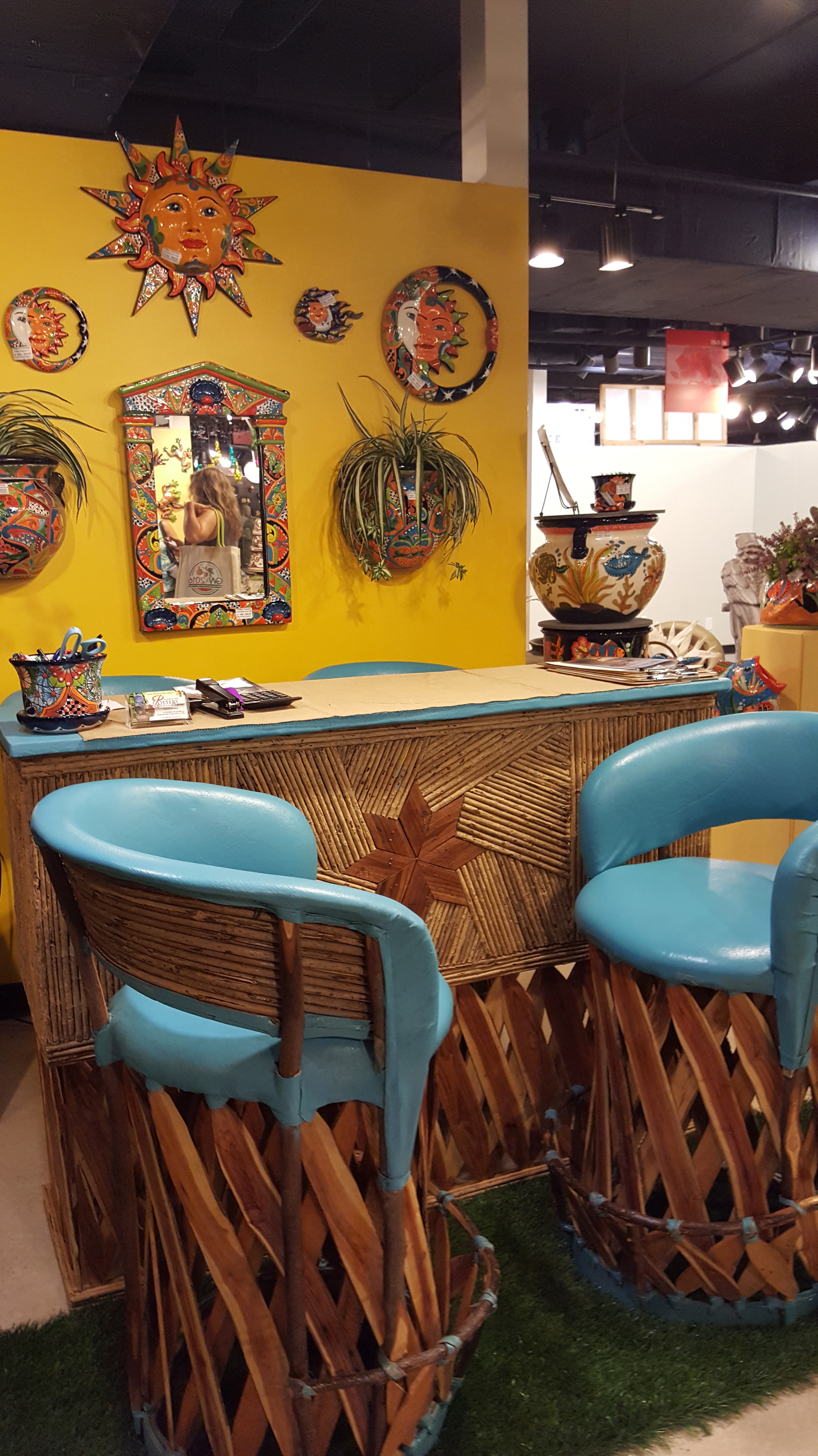
7) Modern Zen – Stone sculptures make striking centerpieces in minimalist and meditative gardens.
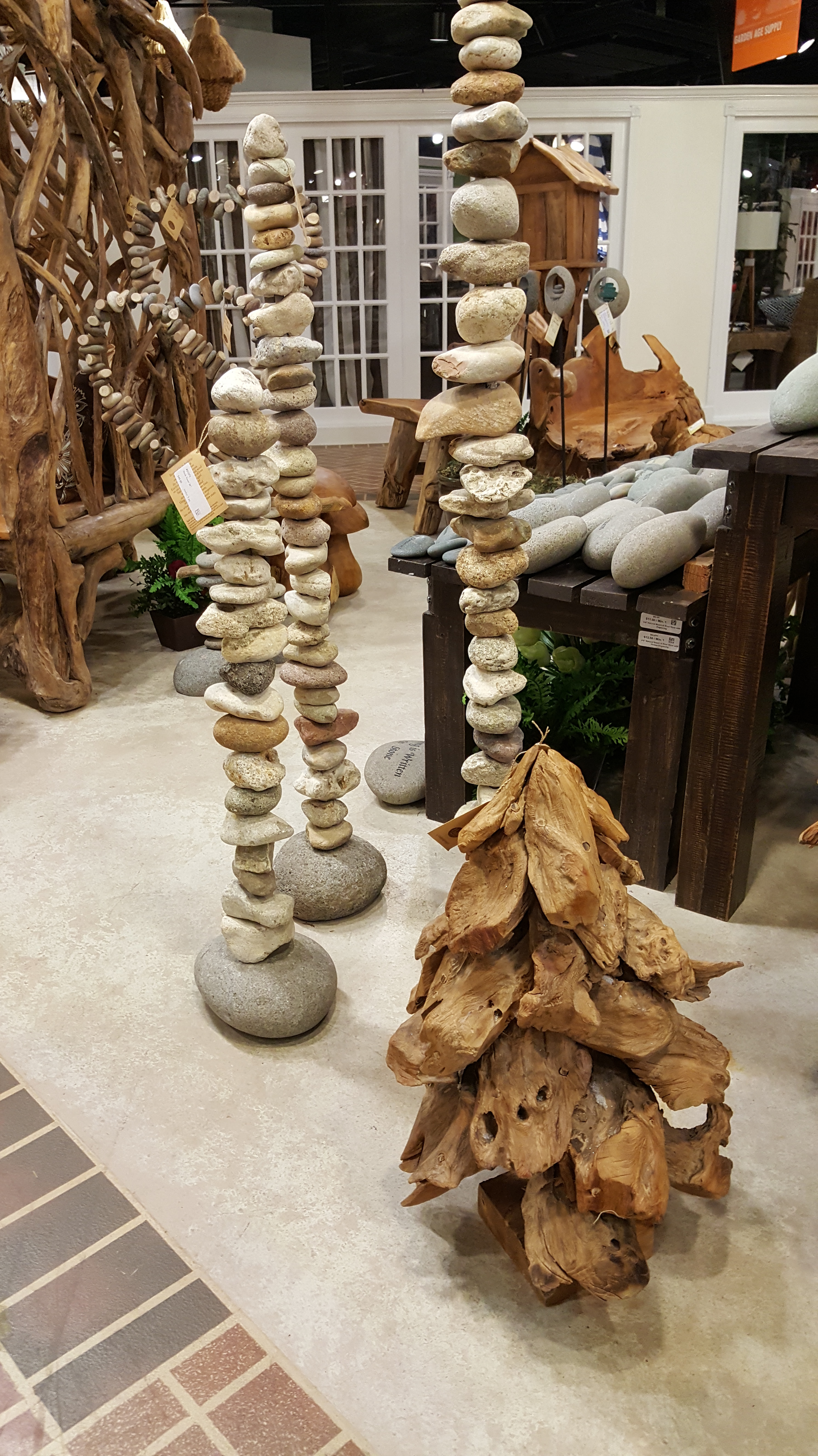
8) Statement Containers – Today’s containers go luxe in grand scale, jewel-tone colors and stone and metallic finishes.
9) Stacked stone fountains – These smaller bubbling water features offer the alluring sound and wildlife water source without the stagnant water of traditional bird baths or the maintenance hassles of larger water features.
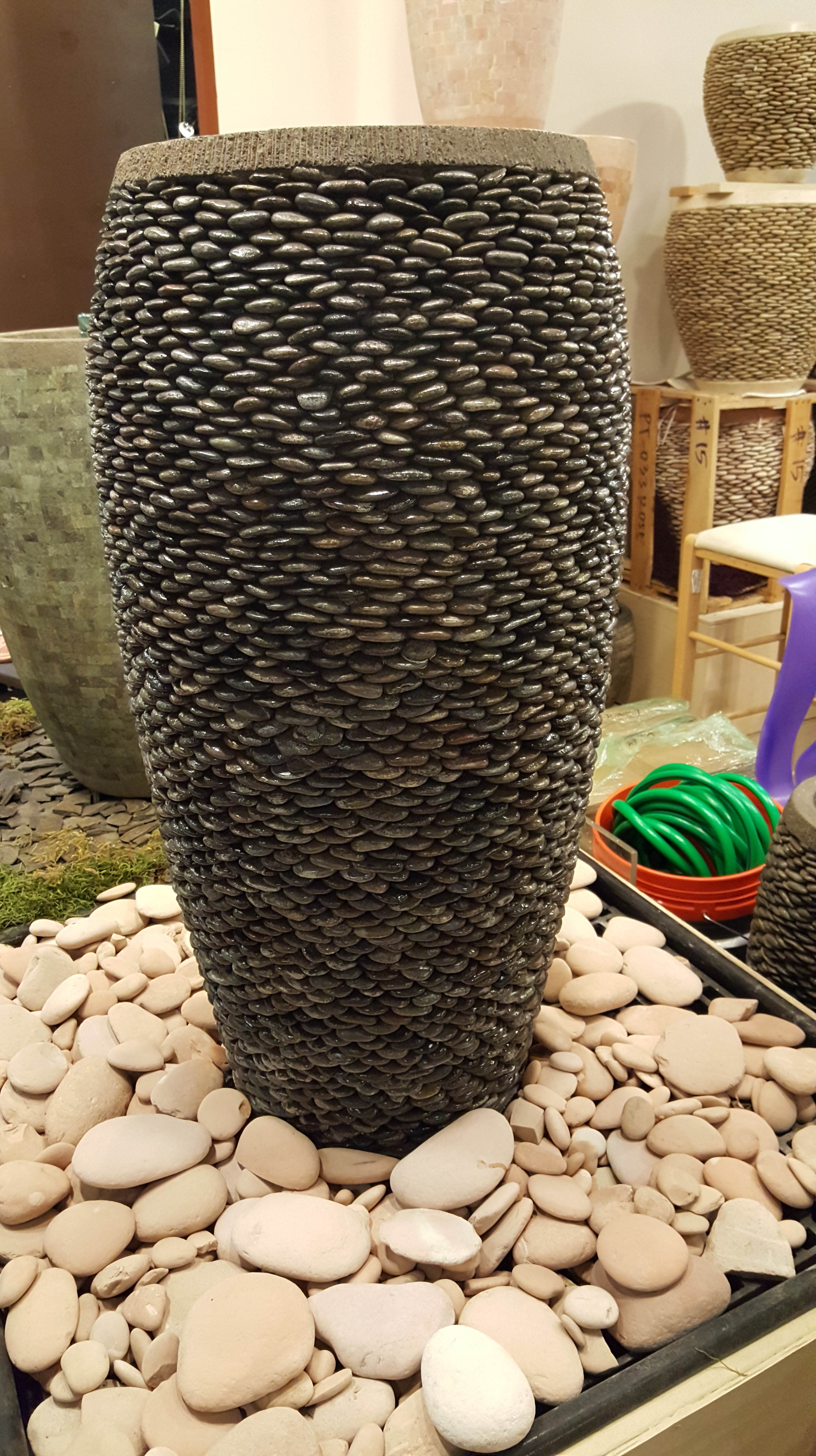
10) Salvaged wood furnishings – Look for painted pieces to add some colorful funk to your backyard.
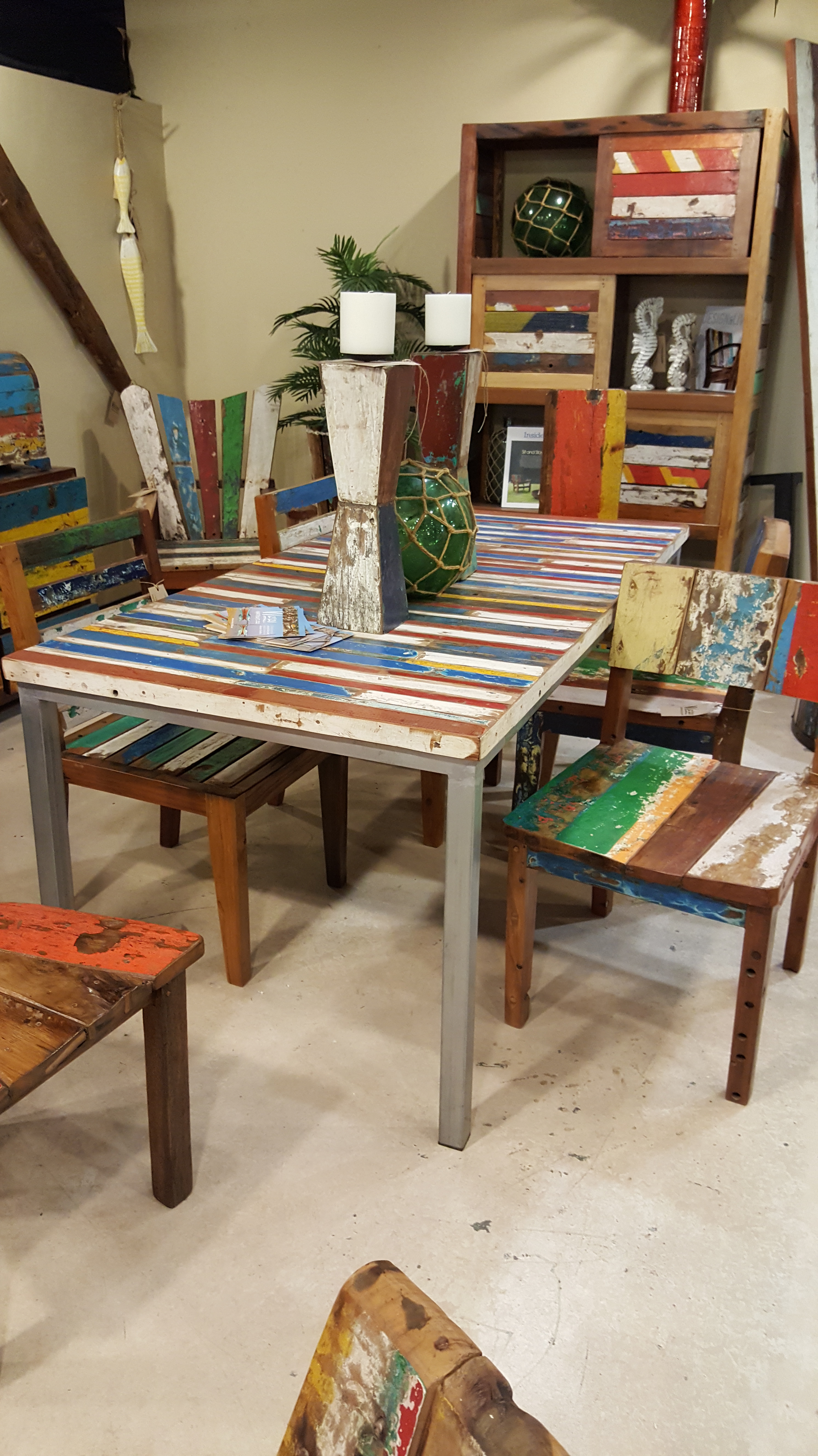
by GardenLover | Sep 9, 2016 | Favorite Flora, Trendspotting
Professional Conferences and Trade Shows = More Plants, People and Gardens
By Debra Knapke
I have been attending the Annual Symposium of the Perennial Plant Association since 1992. This conference is held in different locations in the United States and Canada. It combines education sessions and tours geared toward designers, growers and retailers for whom herbaceous perennials are a part of their business focus. I have visited many prestigious Botanical Gardens and Arboretums and countless private gardens that are not often open to the public. This year, I travelled to Minneapolis, and this was the best yet (I say this, every year).
Below is a very small sample (out of 110 images) of what I experienced in early August.
Plants, Plants and more Plants
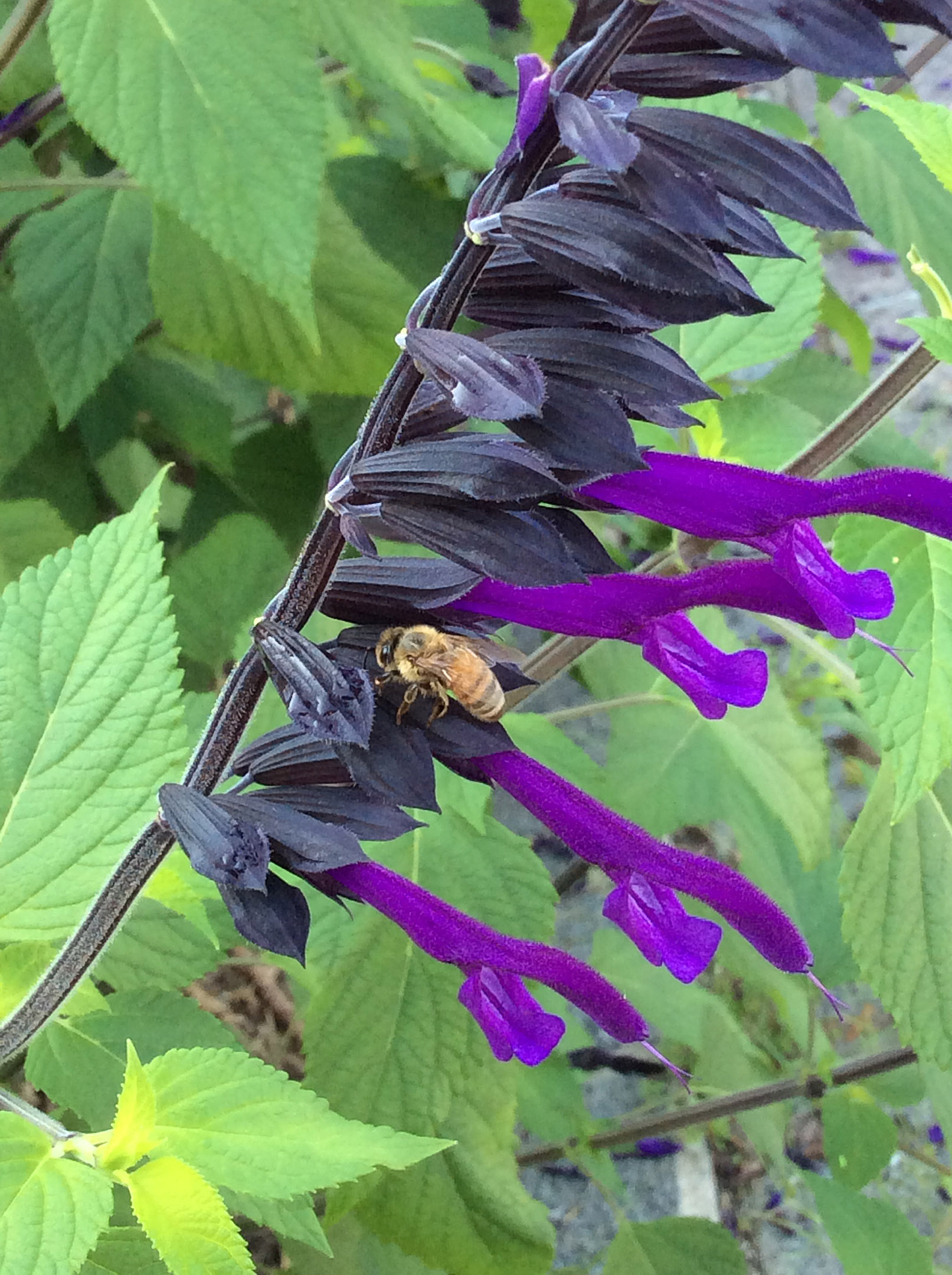 Sages are among my favorite plants: gorgeous flowers, hummingbird and other pollinator attractors, herbal uses, and easy to grow. Above is one of the Brazilian sage species (Salvia guaranitica ‘Amistadt’). Its electric purple blooms call you from across the garden. An older sibling (below) is Black and Blue sage (Salvia guaranitica ‘Black and Blue’). When you grow this sage in your garden be prepared to be strafed by hummingbirds if you happen to be weeding when they wish to feed.
Sages are among my favorite plants: gorgeous flowers, hummingbird and other pollinator attractors, herbal uses, and easy to grow. Above is one of the Brazilian sage species (Salvia guaranitica ‘Amistadt’). Its electric purple blooms call you from across the garden. An older sibling (below) is Black and Blue sage (Salvia guaranitica ‘Black and Blue’). When you grow this sage in your garden be prepared to be strafed by hummingbirds if you happen to be weeding when they wish to feed.
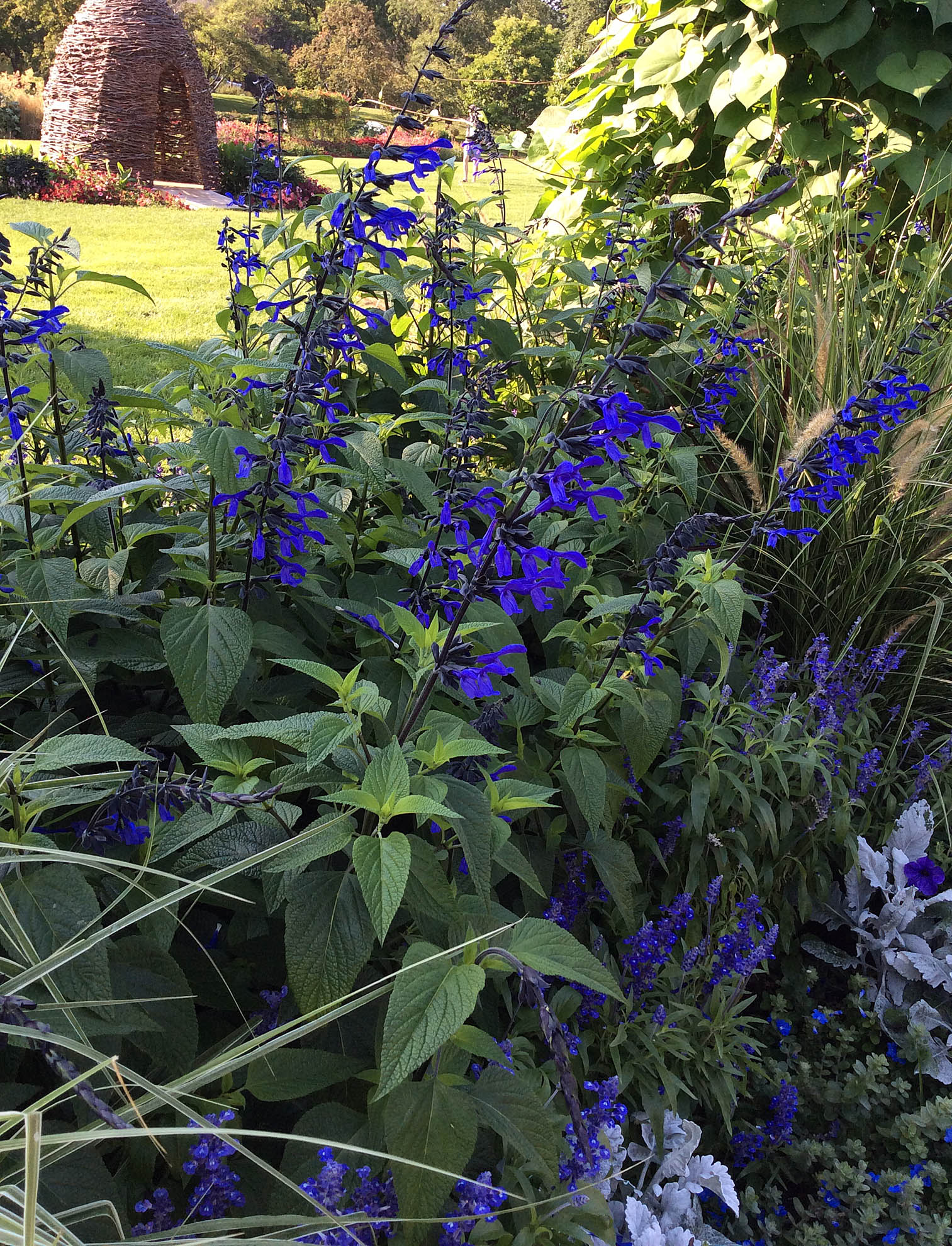
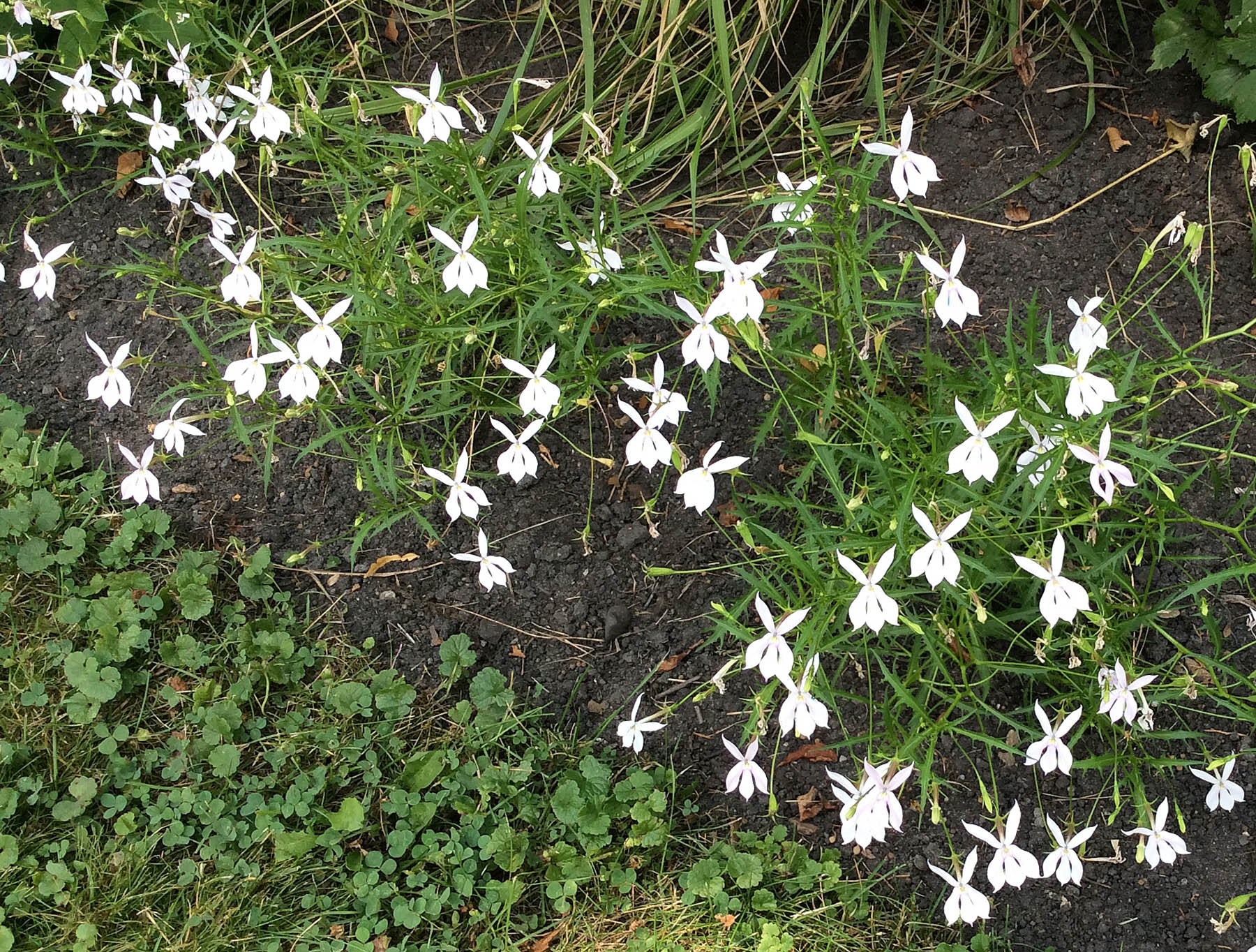 From time the time, the experts are stumped. This lovely little annual had many of us asking: “What is this?” When we found a docent who had the plant list and learned that we were looking at a large-flowered laurentia (Isotoma axillaris ‘Avant Garde White’), there were more than a few sheepish expressions. The flowers were approximately 1.5” in diameter – they are usually much smaller – and they danced in the breeze. And, another plant goes on the list for next year!
From time the time, the experts are stumped. This lovely little annual had many of us asking: “What is this?” When we found a docent who had the plant list and learned that we were looking at a large-flowered laurentia (Isotoma axillaris ‘Avant Garde White’), there were more than a few sheepish expressions. The flowers were approximately 1.5” in diameter – they are usually much smaller – and they danced in the breeze. And, another plant goes on the list for next year!
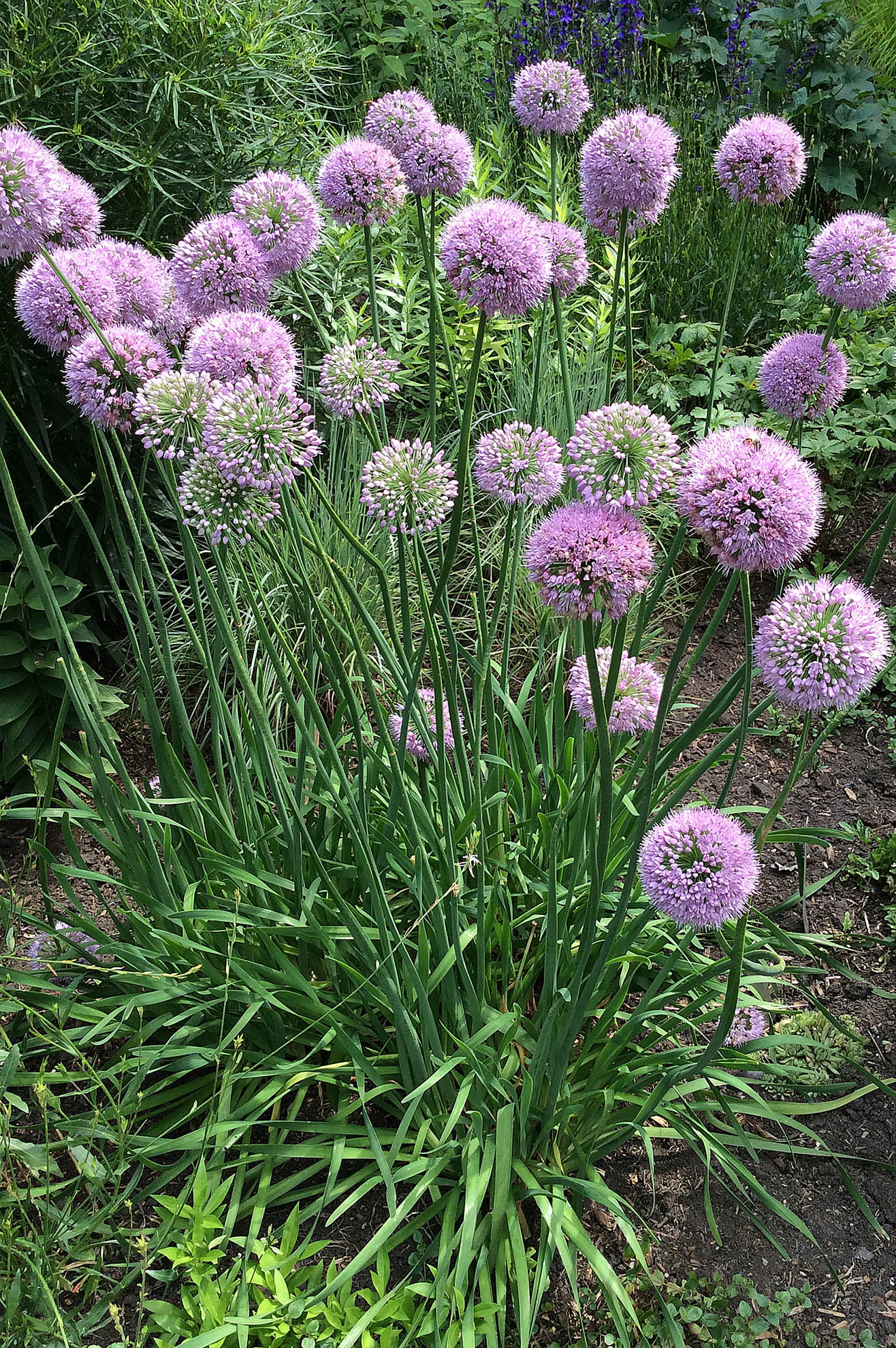 Alliums are another useful plant in the garden. One downside is their excessive seeding. After three to four years, you may have only alliums in your garden. Enter some of the new hybrids that make few to no fertile seeds. Pink Planet allium (above) is one of those new hybrids; Millennium is another – Millennium allium is now in my garden. I will let you know about its fecundity.
Alliums are another useful plant in the garden. One downside is their excessive seeding. After three to four years, you may have only alliums in your garden. Enter some of the new hybrids that make few to no fertile seeds. Pink Planet allium (above) is one of those new hybrids; Millennium is another – Millennium allium is now in my garden. I will let you know about its fecundity.
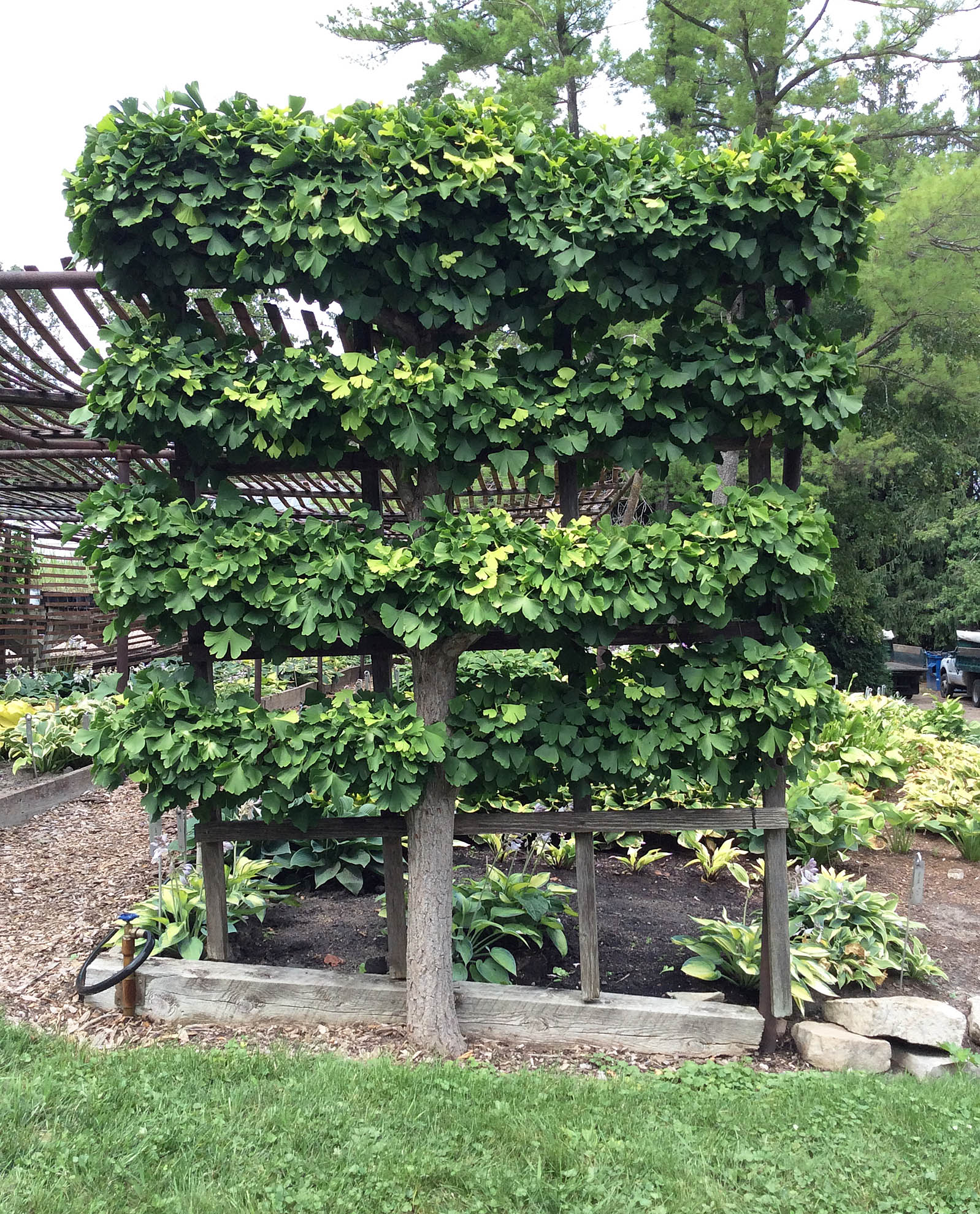 At Kelly and Kelly Nursery, we saw what patience and vision can achieve. Need a fence? Create a ginkgo espalier. If you start this project now, you can have this in 10 to 15 years, or so.
At Kelly and Kelly Nursery, we saw what patience and vision can achieve. Need a fence? Create a ginkgo espalier. If you start this project now, you can have this in 10 to 15 years, or so.
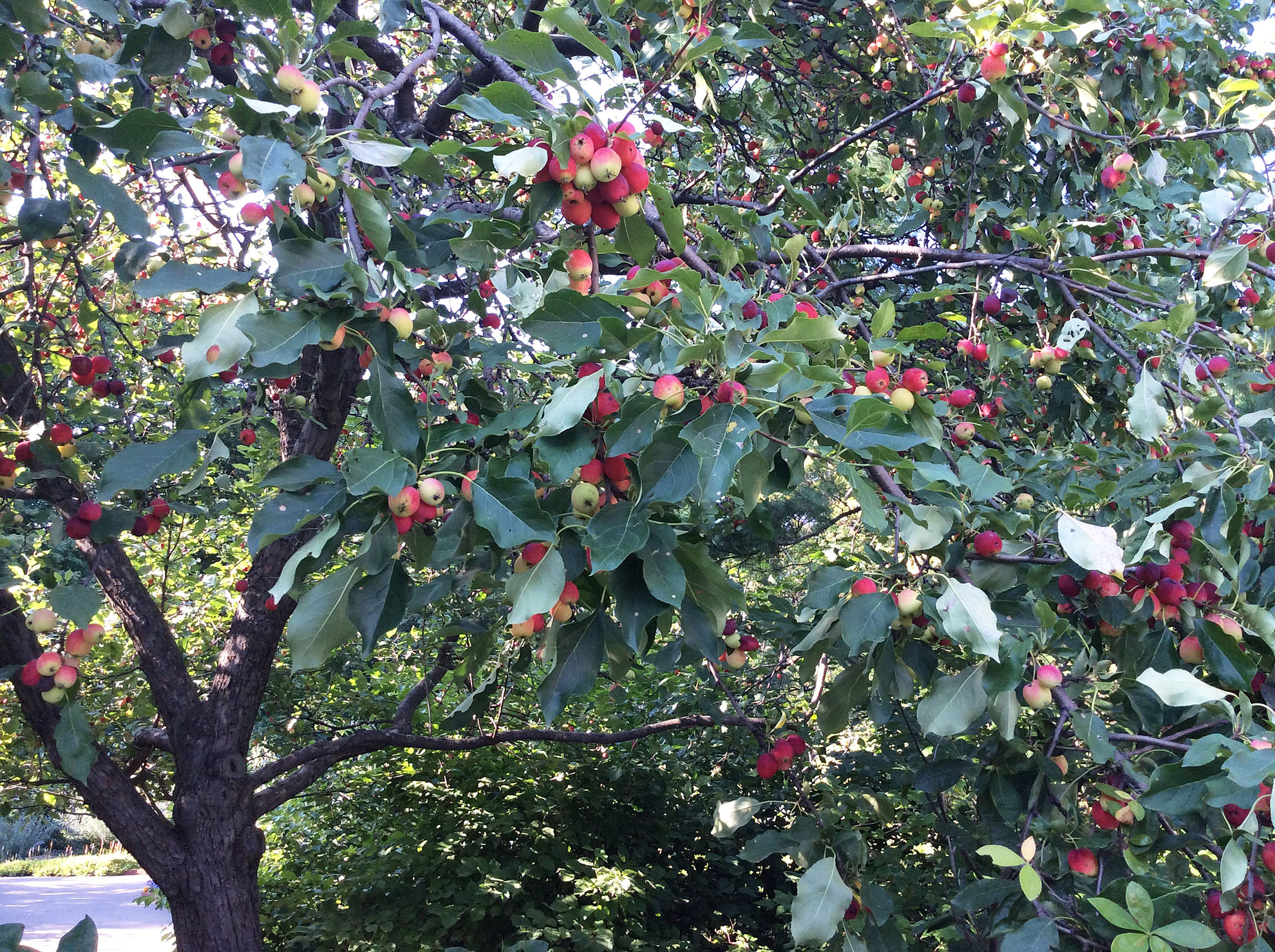 I would be remiss if I didn’t include a picture from the edible garden at the Minnesota Landscape Arboretum. If you are looking for the tastiest crabapple for jams and jellies then Dolgo crabapple (Malus ‘Dolgo’) is your tree. What is the only difference between a crabapple and an apple? The diameter of a crabapple is two inches or less; an apple is larger than two inches.
I would be remiss if I didn’t include a picture from the edible garden at the Minnesota Landscape Arboretum. If you are looking for the tastiest crabapple for jams and jellies then Dolgo crabapple (Malus ‘Dolgo’) is your tree. What is the only difference between a crabapple and an apple? The diameter of a crabapple is two inches or less; an apple is larger than two inches.
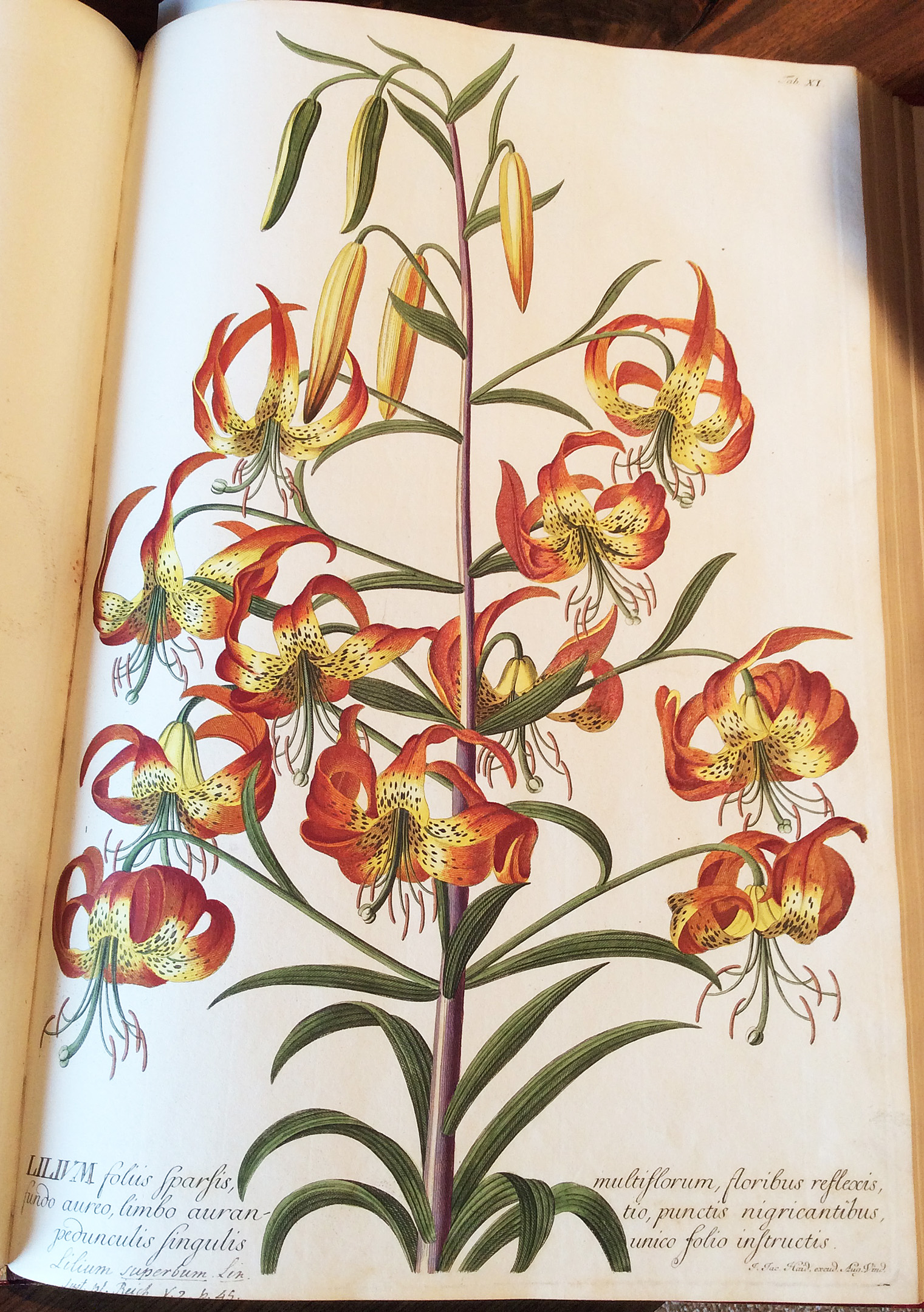 Not all of the plants we see are in pots or gardens. The Minnesota Landscape Arboretum has an extensive collection of rare books in its library. This gorgeous lily was hand-colored and sold in limited folios to those who could afford books back in 1542 — 50 years after Columbus sailed the ocean blue. (De Historia Stirpium, Leonhart Fuchs, 1542)
Not all of the plants we see are in pots or gardens. The Minnesota Landscape Arboretum has an extensive collection of rare books in its library. This gorgeous lily was hand-colored and sold in limited folios to those who could afford books back in 1542 — 50 years after Columbus sailed the ocean blue. (De Historia Stirpium, Leonhart Fuchs, 1542)
Design!
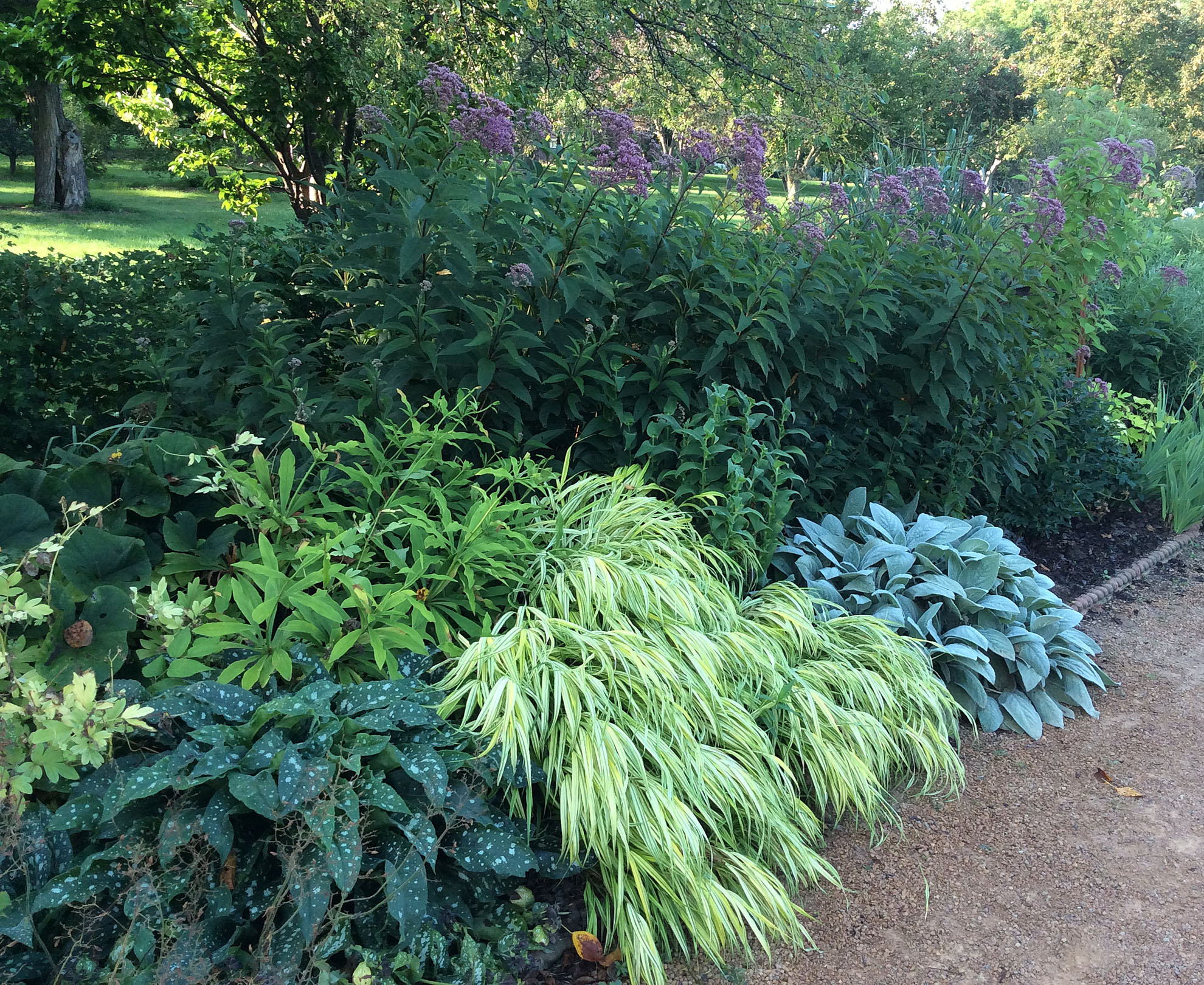 Plants are the designer’s medium. We use the tools of line, form, texture and color to create borders, beds and vignettes. We make places of order, activity, privacy and repose. Here is a border that is peaceful and textural in nature.
Plants are the designer’s medium. We use the tools of line, form, texture and color to create borders, beds and vignettes. We make places of order, activity, privacy and repose. Here is a border that is peaceful and textural in nature.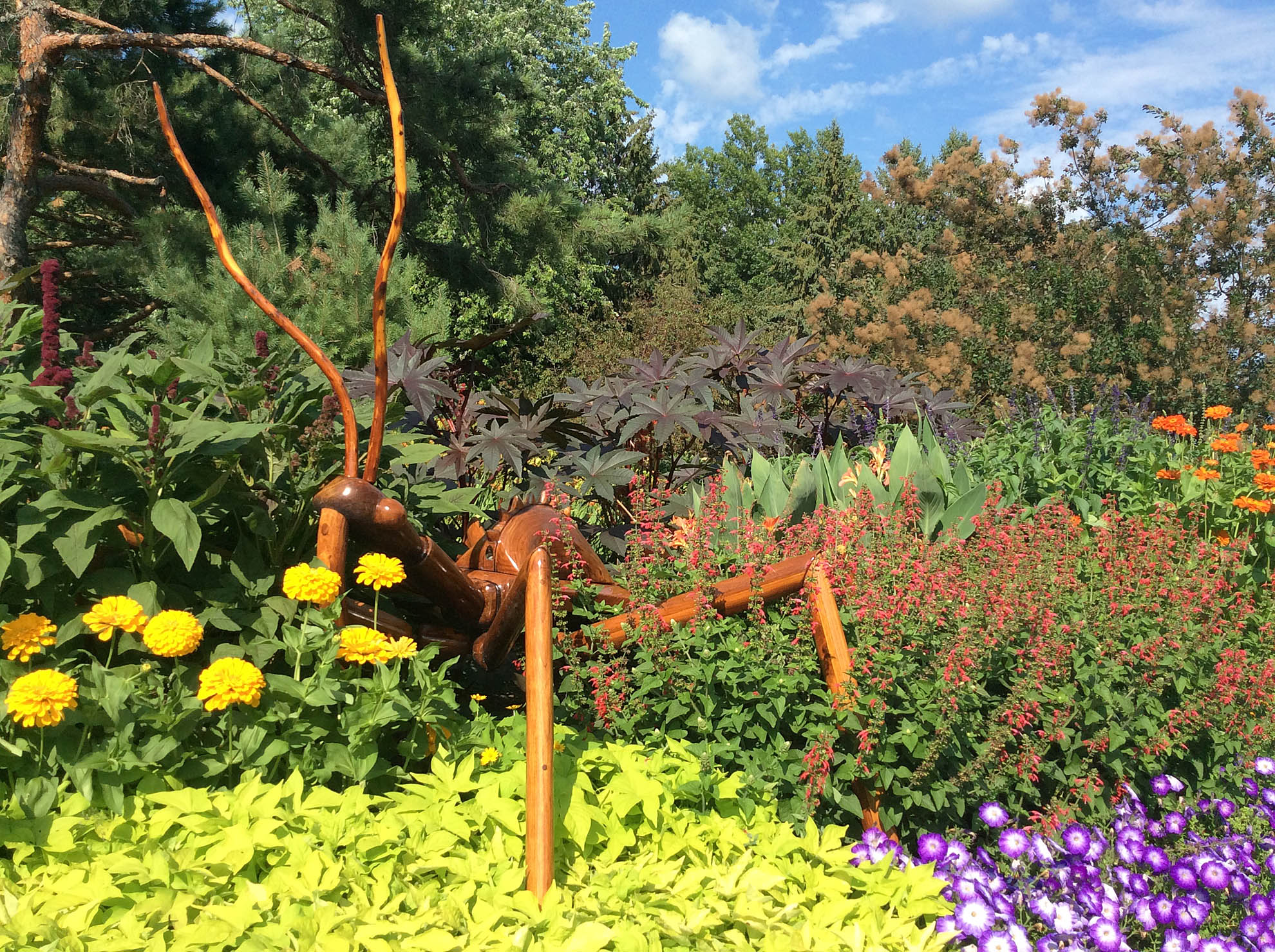
… while this border is a riot of hot colors. It also happens to be complimented by a “Big Bug” assassin bug.
Speaking of insects: bee hotels have been making appearances in all the best gardens. I’ve seen recommendations for creating tubes from paper or thin cardboard. If you look closely, you can see that all of the materials in the houses are from the garden: small drilled branches and herbaceous plant stems that are usually relegated to the compost pile. Here are two versions — a multi-level hotel and a simple bee hostal.
Coda
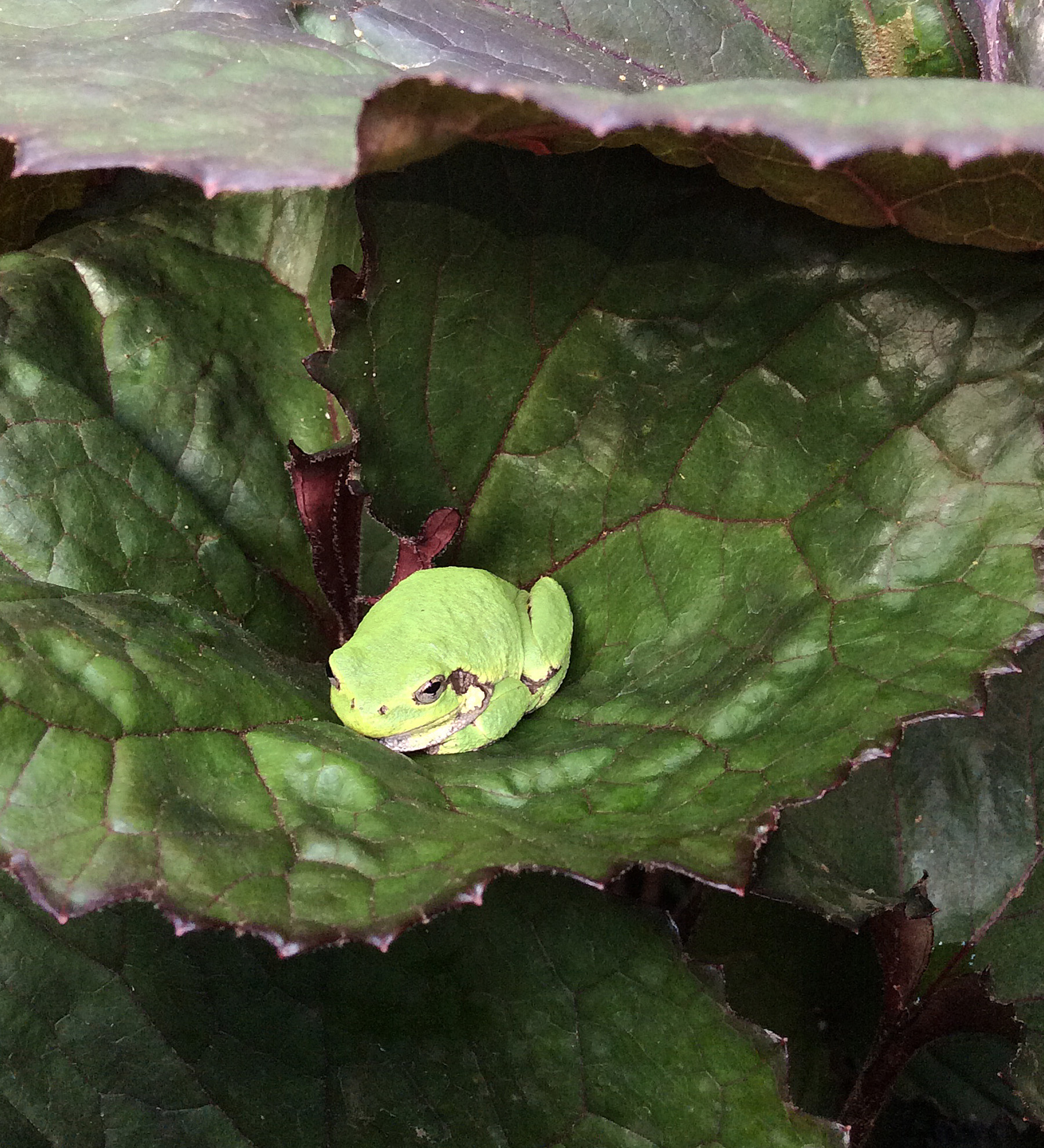 Being a plant addict is not a hopeless condition. There are times when something other than a plant grabs my attention. This green tree frog nestled in a ligularia leaf may have been one of the most photographed garden visitors on the garden tour. Of course we were discussing the perfect color harmony of the reddish-brown markings on the frog with the veins on the leaf. Get a bunch of designers together and what do you get? Endless discussions of color, form and texture in the garden!
Being a plant addict is not a hopeless condition. There are times when something other than a plant grabs my attention. This green tree frog nestled in a ligularia leaf may have been one of the most photographed garden visitors on the garden tour. Of course we were discussing the perfect color harmony of the reddish-brown markings on the frog with the veins on the leaf. Get a bunch of designers together and what do you get? Endless discussions of color, form and texture in the garden!
Wishing you a beautiful fall!







 Art brings garden feel to subway tunnel
Art brings garden feel to subway tunnel


 By Teresa Woodard
By Teresa Woodard







 Sages are among my favorite plants: gorgeous flowers, hummingbird and other pollinator attractors, herbal uses, and easy to grow. Above is one of the Brazilian sage species (Salvia guaranitica ‘Amistadt’). Its electric purple blooms call you from across the garden. An older sibling (below) is Black and Blue sage (Salvia guaranitica ‘Black and Blue’). When you grow this sage in your garden be prepared to be strafed by hummingbirds if you happen to be weeding when they wish to feed.
Sages are among my favorite plants: gorgeous flowers, hummingbird and other pollinator attractors, herbal uses, and easy to grow. Above is one of the Brazilian sage species (Salvia guaranitica ‘Amistadt’). Its electric purple blooms call you from across the garden. An older sibling (below) is Black and Blue sage (Salvia guaranitica ‘Black and Blue’). When you grow this sage in your garden be prepared to be strafed by hummingbirds if you happen to be weeding when they wish to feed.
 From time the time, the experts are stumped. This lovely little annual had many of us asking: “What is this?” When we found a docent who had the plant list and learned that we were looking at a large-flowered laurentia (Isotoma axillaris ‘Avant Garde White’), there were more than a few sheepish expressions. The flowers were approximately 1.5” in diameter – they are usually much smaller – and they danced in the breeze. And, another plant goes on the list for next year!
From time the time, the experts are stumped. This lovely little annual had many of us asking: “What is this?” When we found a docent who had the plant list and learned that we were looking at a large-flowered laurentia (Isotoma axillaris ‘Avant Garde White’), there were more than a few sheepish expressions. The flowers were approximately 1.5” in diameter – they are usually much smaller – and they danced in the breeze. And, another plant goes on the list for next year! Alliums are another useful plant in the garden. One downside is their excessive seeding. After three to four years, you may have only alliums in your garden. Enter some of the new hybrids that make few to no fertile seeds. Pink Planet allium (above) is one of those new hybrids; Millennium is another – Millennium allium is now in my garden. I will let you know about its fecundity.
Alliums are another useful plant in the garden. One downside is their excessive seeding. After three to four years, you may have only alliums in your garden. Enter some of the new hybrids that make few to no fertile seeds. Pink Planet allium (above) is one of those new hybrids; Millennium is another – Millennium allium is now in my garden. I will let you know about its fecundity. At Kelly and Kelly Nursery, we saw what patience and vision can achieve. Need a fence? Create a ginkgo espalier. If you start this project now, you can have this in 10 to 15 years, or so.
At Kelly and Kelly Nursery, we saw what patience and vision can achieve. Need a fence? Create a ginkgo espalier. If you start this project now, you can have this in 10 to 15 years, or so. I would be remiss if I didn’t include a picture from the edible garden at the Minnesota Landscape Arboretum. If you are looking for the tastiest crabapple for jams and jellies then Dolgo crabapple (Malus ‘Dolgo’) is your tree. What is the only difference between a crabapple and an apple? The diameter of a crabapple is two inches or less; an apple is larger than two inches.
I would be remiss if I didn’t include a picture from the edible garden at the Minnesota Landscape Arboretum. If you are looking for the tastiest crabapple for jams and jellies then Dolgo crabapple (Malus ‘Dolgo’) is your tree. What is the only difference between a crabapple and an apple? The diameter of a crabapple is two inches or less; an apple is larger than two inches. Not all of the plants we see are in pots or gardens. The Minnesota Landscape Arboretum has an extensive collection of rare books in its library. This gorgeous lily was hand-colored and sold in limited folios to those who could afford books back in 1542 — 50 years after Columbus sailed the ocean blue. (De Historia Stirpium, Leonhart Fuchs, 1542)
Not all of the plants we see are in pots or gardens. The Minnesota Landscape Arboretum has an extensive collection of rare books in its library. This gorgeous lily was hand-colored and sold in limited folios to those who could afford books back in 1542 — 50 years after Columbus sailed the ocean blue. (De Historia Stirpium, Leonhart Fuchs, 1542) Plants are the designer’s medium. We use the tools of line, form, texture and color to create borders, beds and vignettes. We make places of order, activity, privacy and repose. Here is a border that is peaceful and textural in nature.
Plants are the designer’s medium. We use the tools of line, form, texture and color to create borders, beds and vignettes. We make places of order, activity, privacy and repose. Here is a border that is peaceful and textural in nature.
 Being a plant addict is not a hopeless condition. There are times when something other than a plant grabs my attention. This green tree frog nestled in a ligularia leaf may have been one of the most photographed garden visitors on the garden tour. Of course we were discussing the perfect color harmony of the reddish-brown markings on the frog with the veins on the leaf. Get a bunch of designers together and what do you get? Endless discussions of color, form and texture in the garden!
Being a plant addict is not a hopeless condition. There are times when something other than a plant grabs my attention. This green tree frog nestled in a ligularia leaf may have been one of the most photographed garden visitors on the garden tour. Of course we were discussing the perfect color harmony of the reddish-brown markings on the frog with the veins on the leaf. Get a bunch of designers together and what do you get? Endless discussions of color, form and texture in the garden!